As soon as we start asking "What inspires you?" or “What is inspiration?” for that matter, as it pertains to any art-form, be it writing, painting, making music, filmmaking, or photography and so forth, we must also ask “What is creativity”, pondering this essential question of where do good ideas come from and how we can coax them into manifesting. I can't answer that for you. I can barely answer that for myself. I will however try to put down some thoughts on the matter, consider this an organized ramble of sorts.... a journaling.
Filmmaker David Lynch puts it into perspective. Here’s what he has to say on the subject:
“An idea comes — and you see it, and you hear it, and you know it… We don’t do anything without an idea. So they’re beautiful gifts. And I always say, you desiring an idea is like a bait on a hook — you can pull them in. And if you catch an idea that you love, that’s a beautiful, beautiful day. And you write that idea down so you won’t forget it. And that idea that you caught might just be a fragment of the whole — whatever it is you’re working on — but now you have even more bait. Thinking about that small fragment — that little fish — will bring in more, and they’ll come in and they’ll hook on. And more and more come in, and pretty soon you might have a script — or a chair, or a painting, or an idea for a painting. [They come], more often than not, in small fragments.”
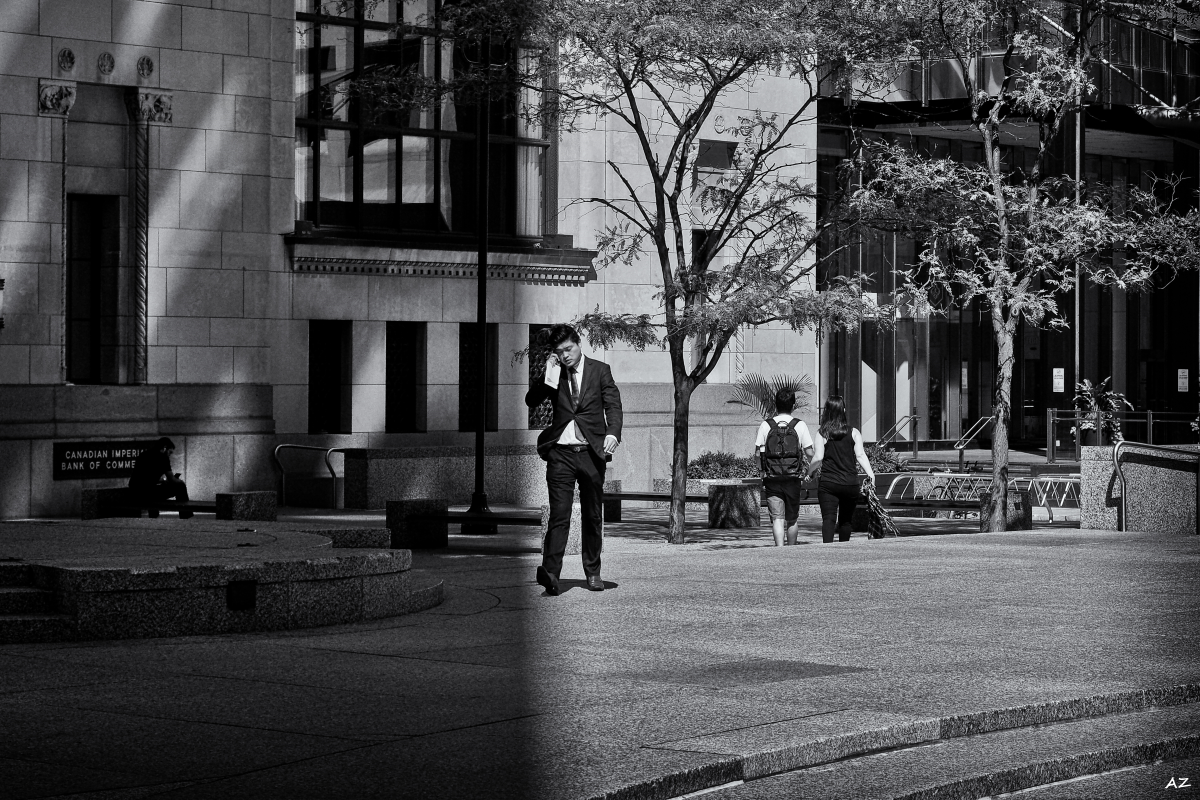

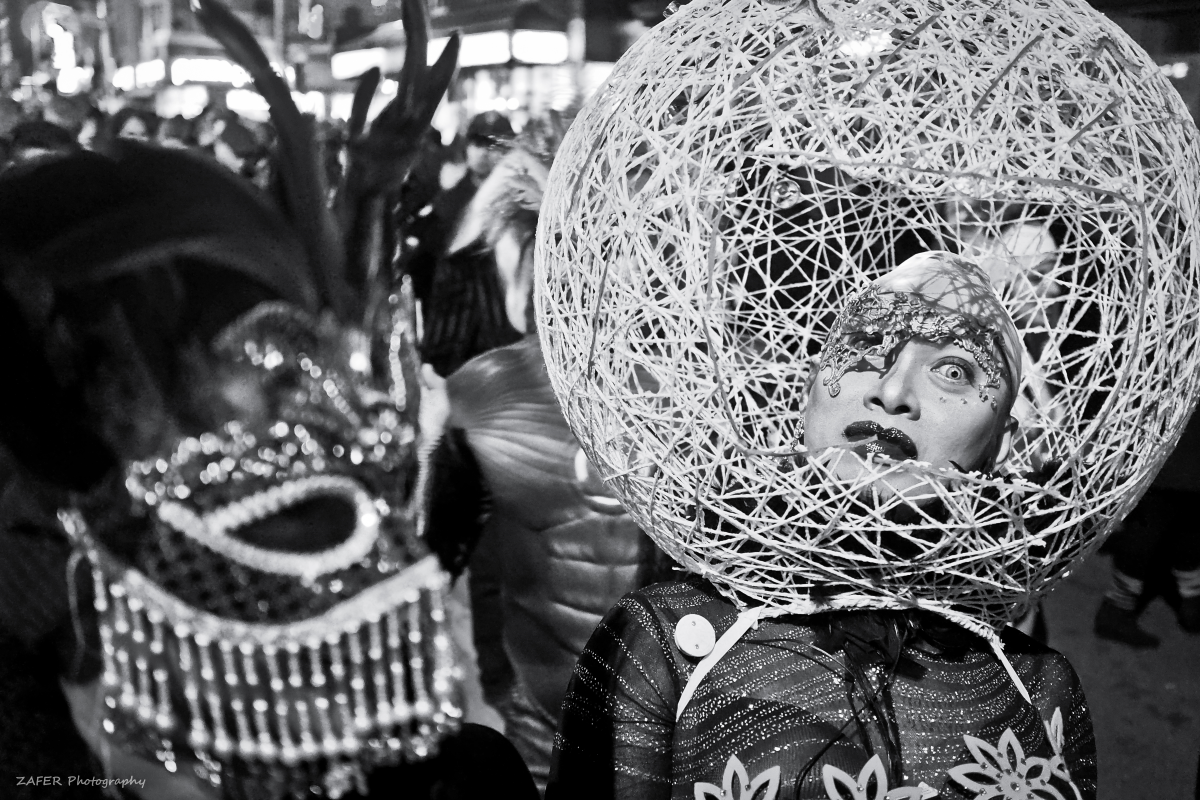
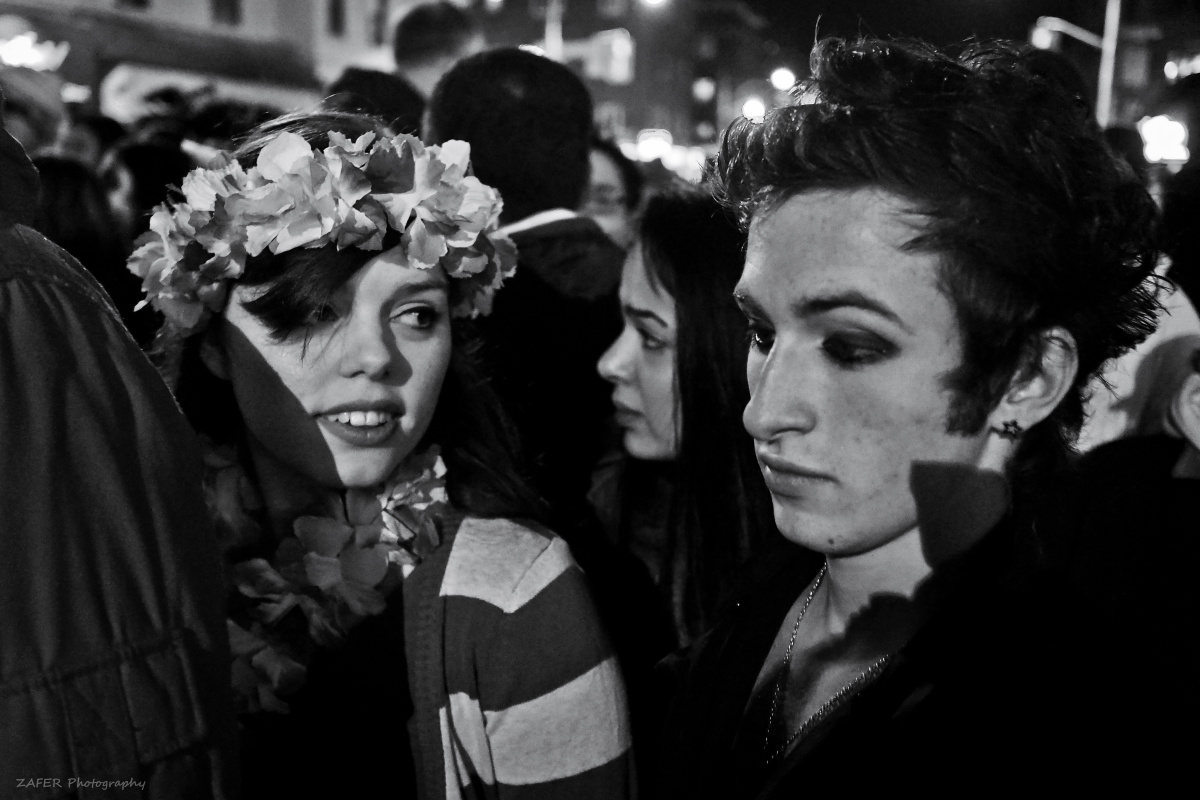
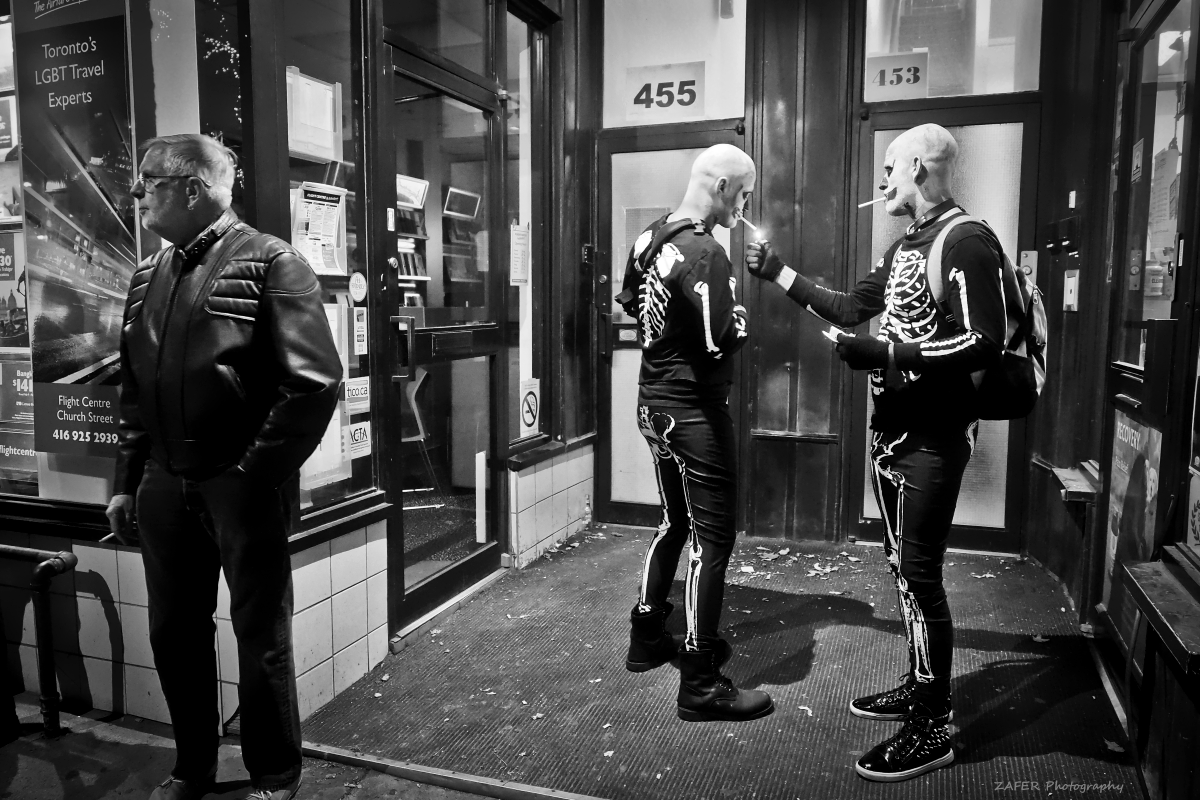
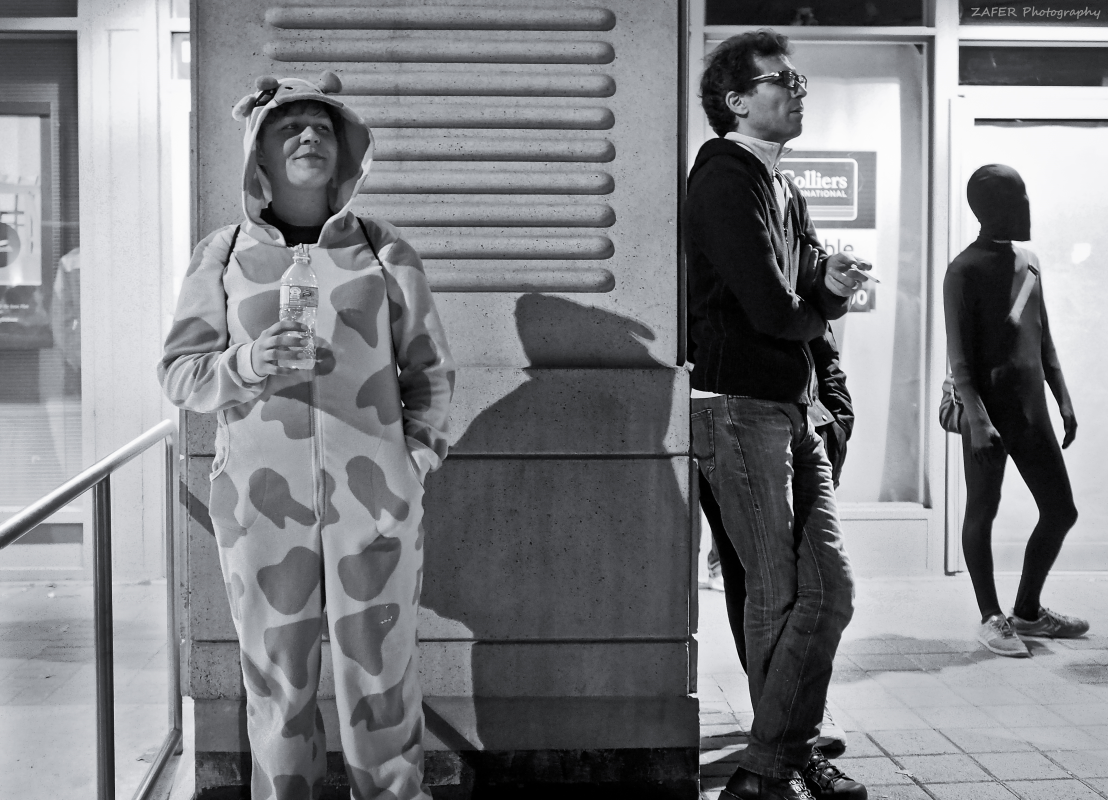
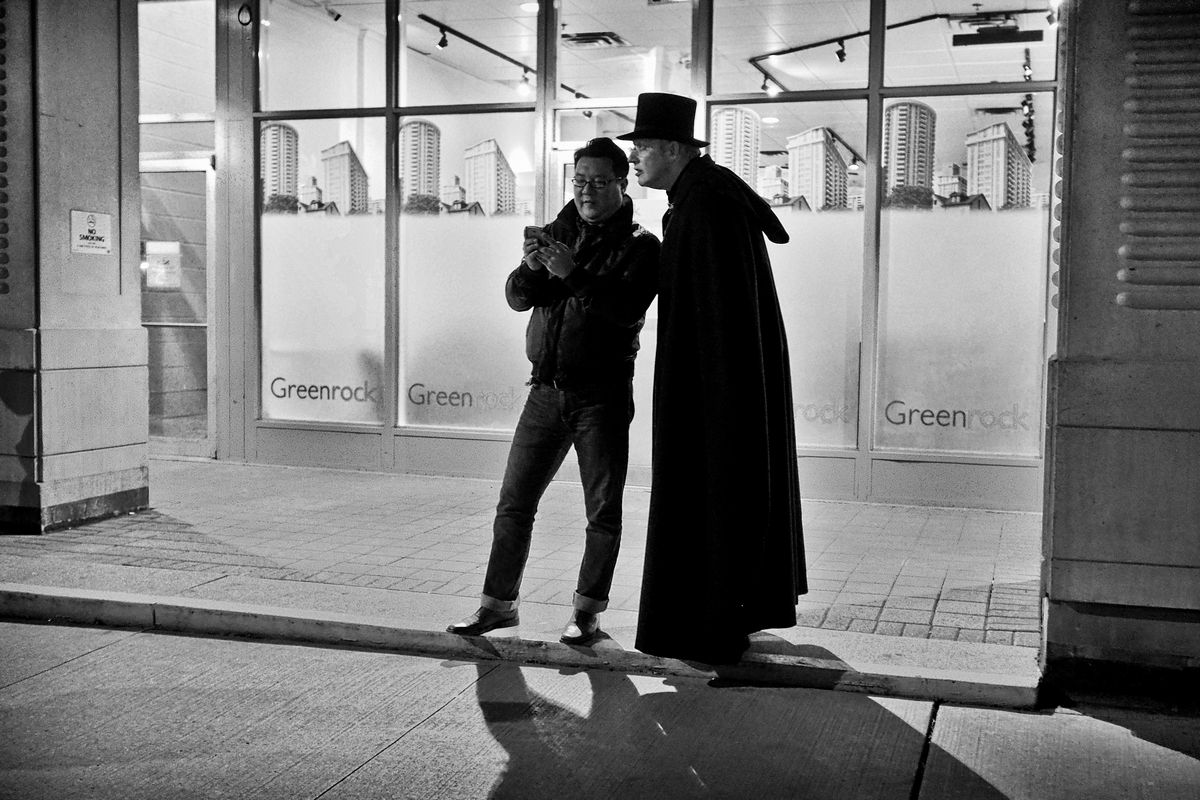
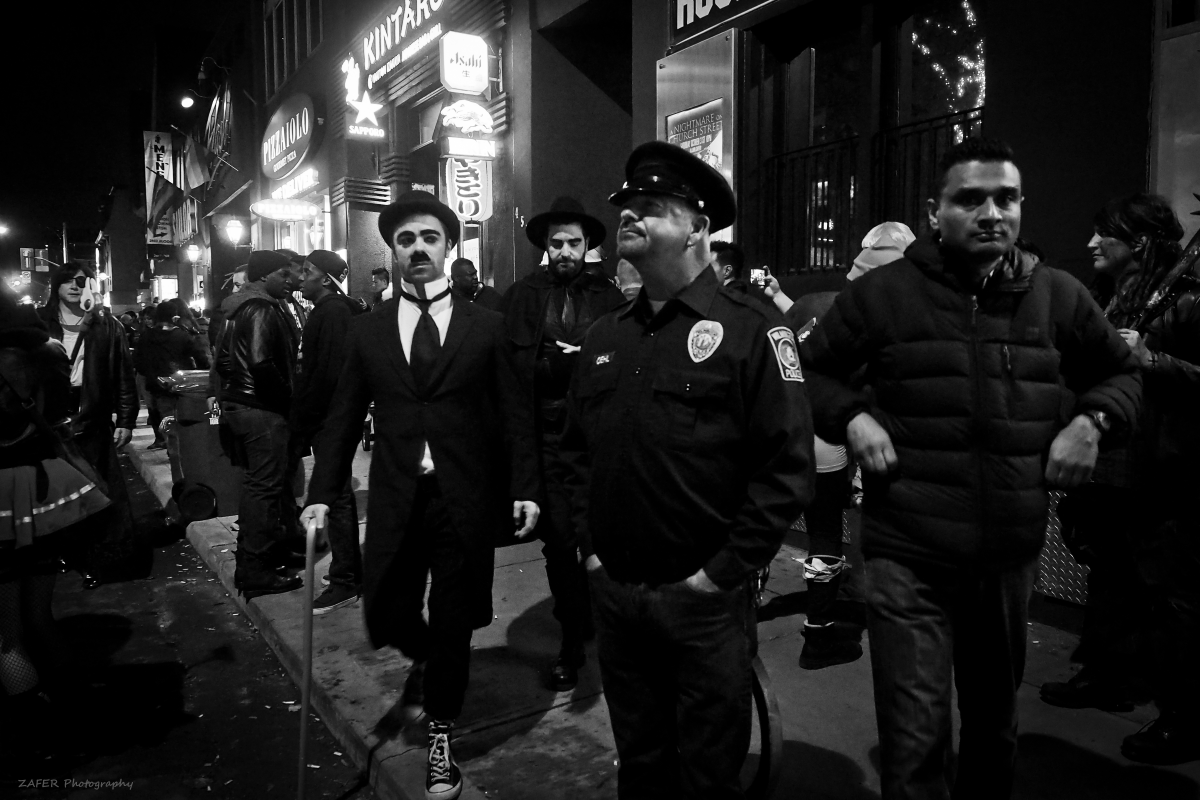
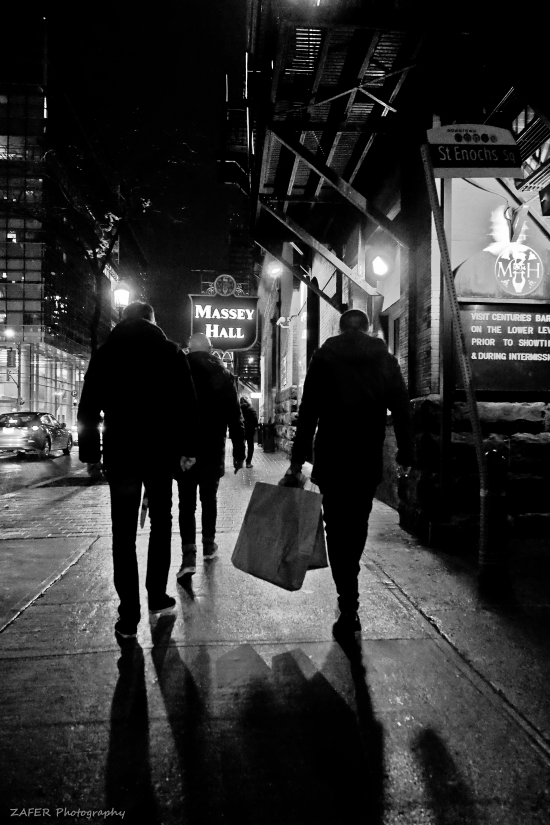
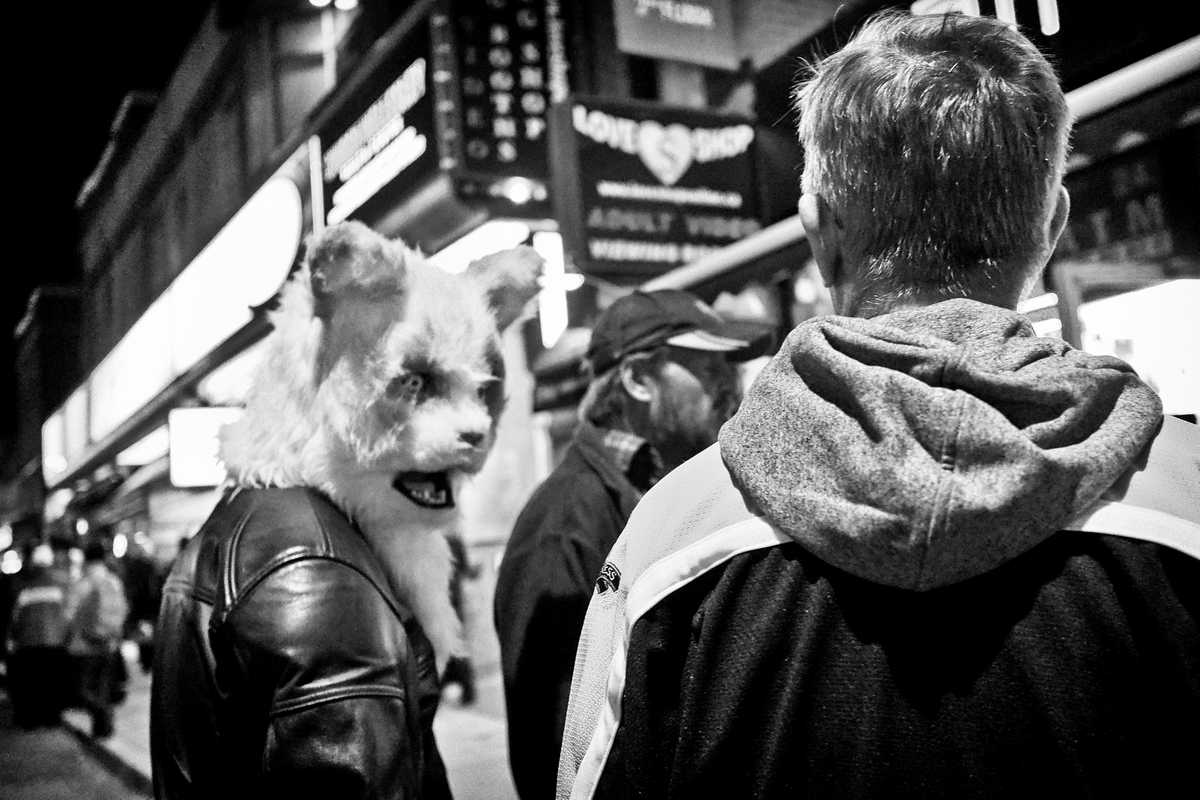
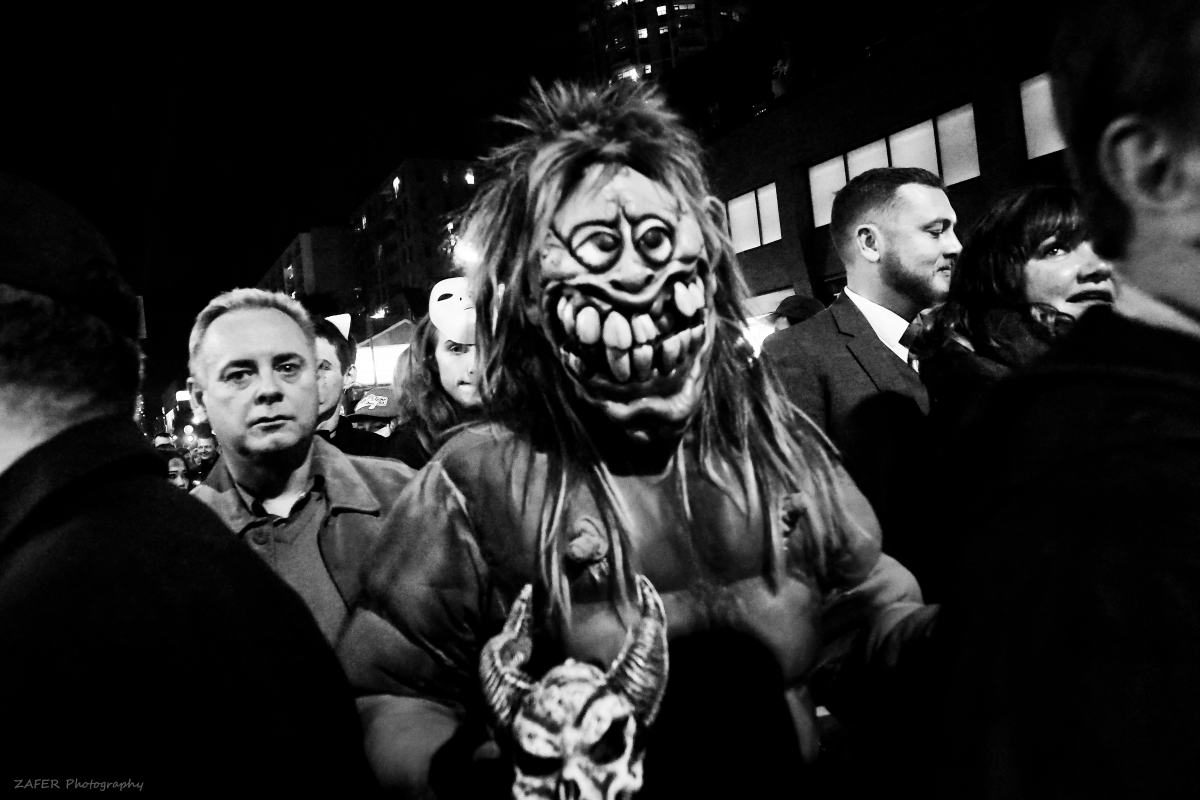
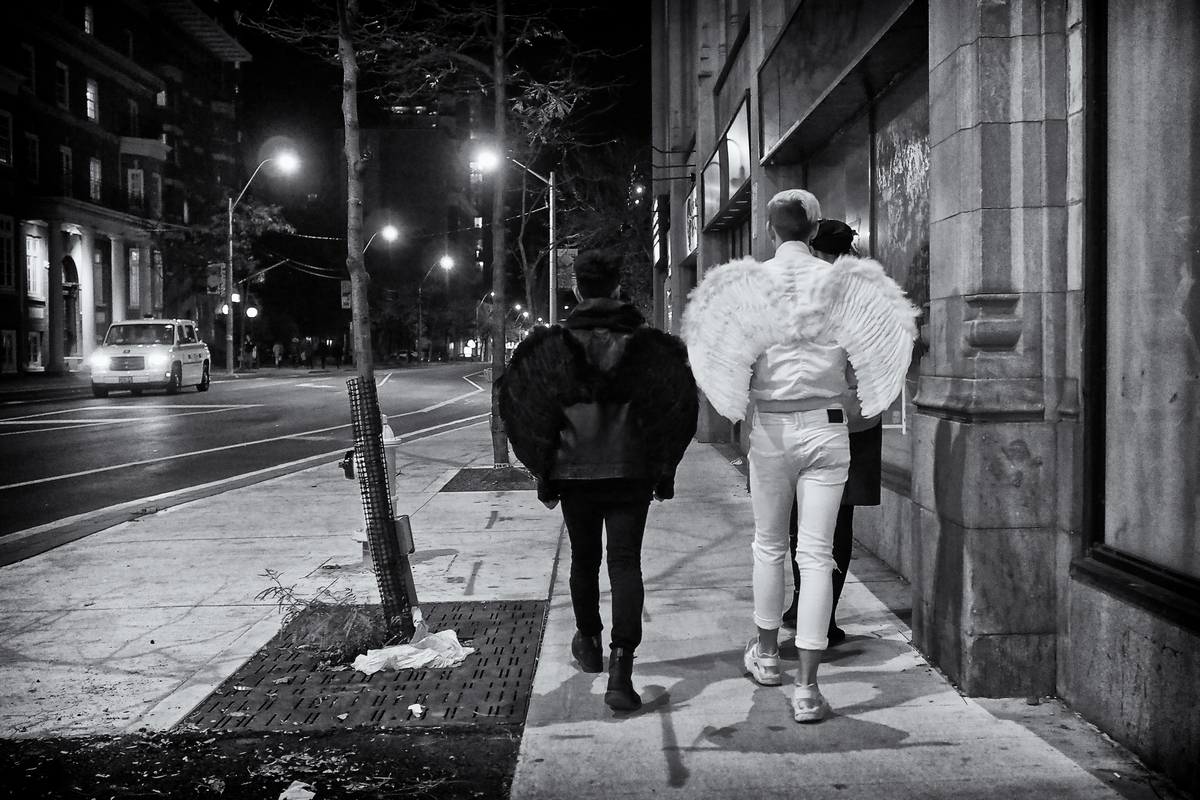
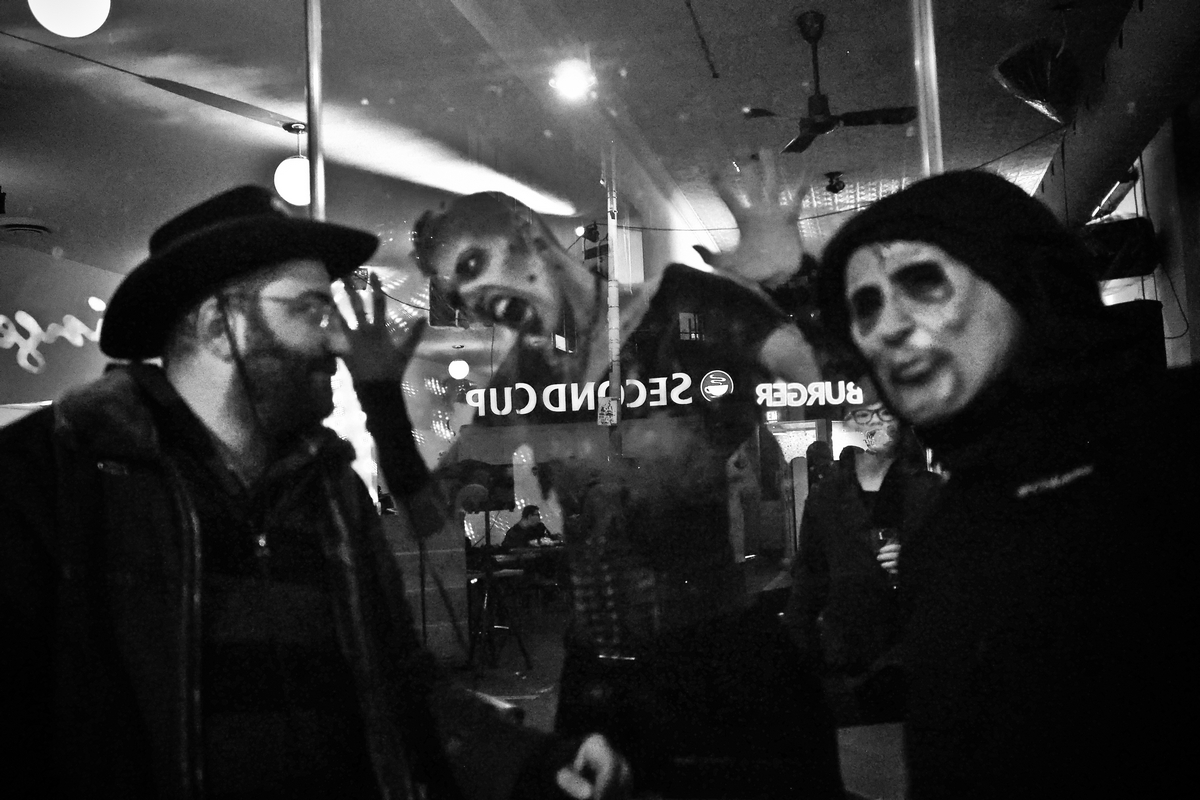
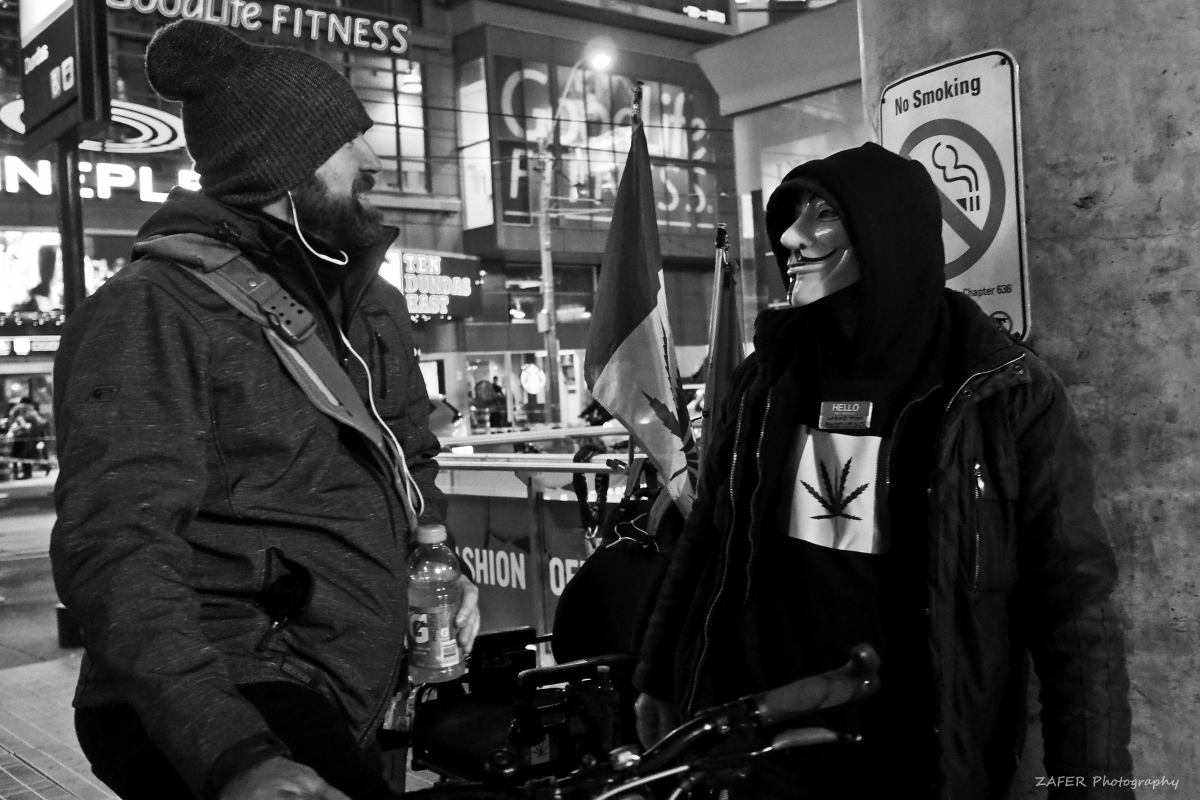
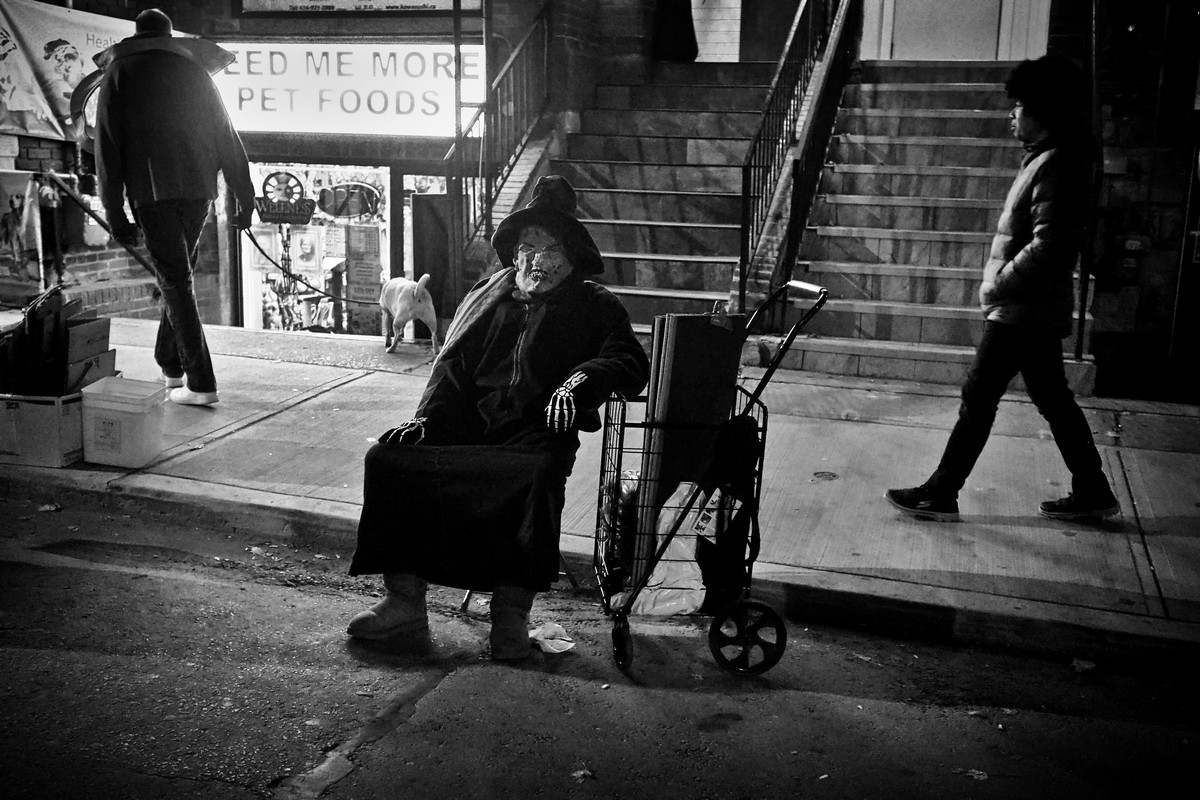
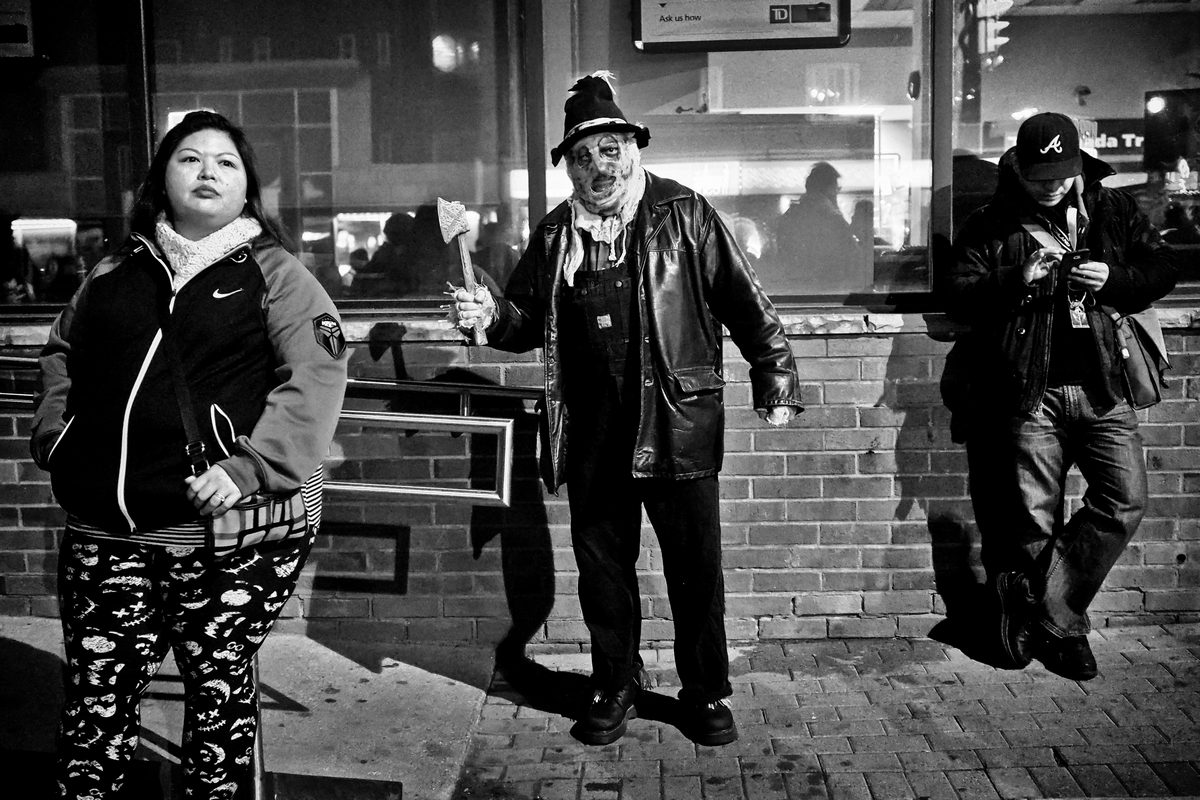
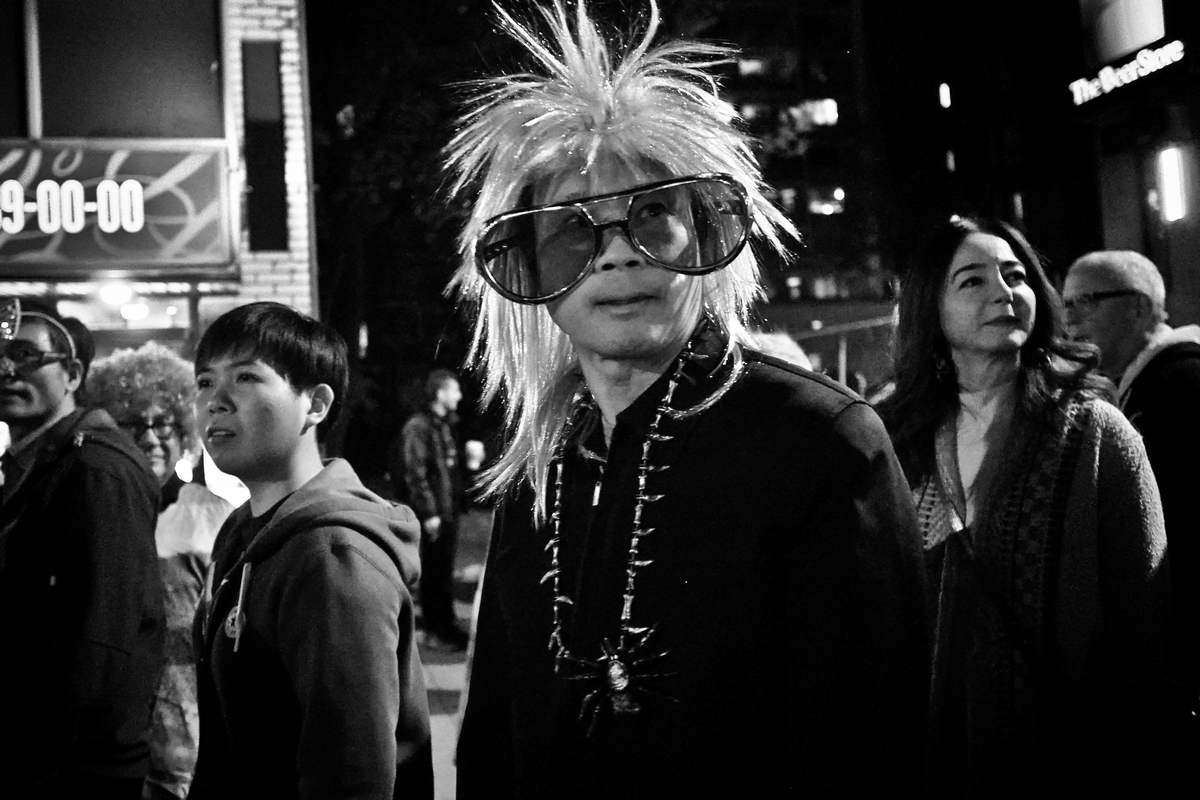
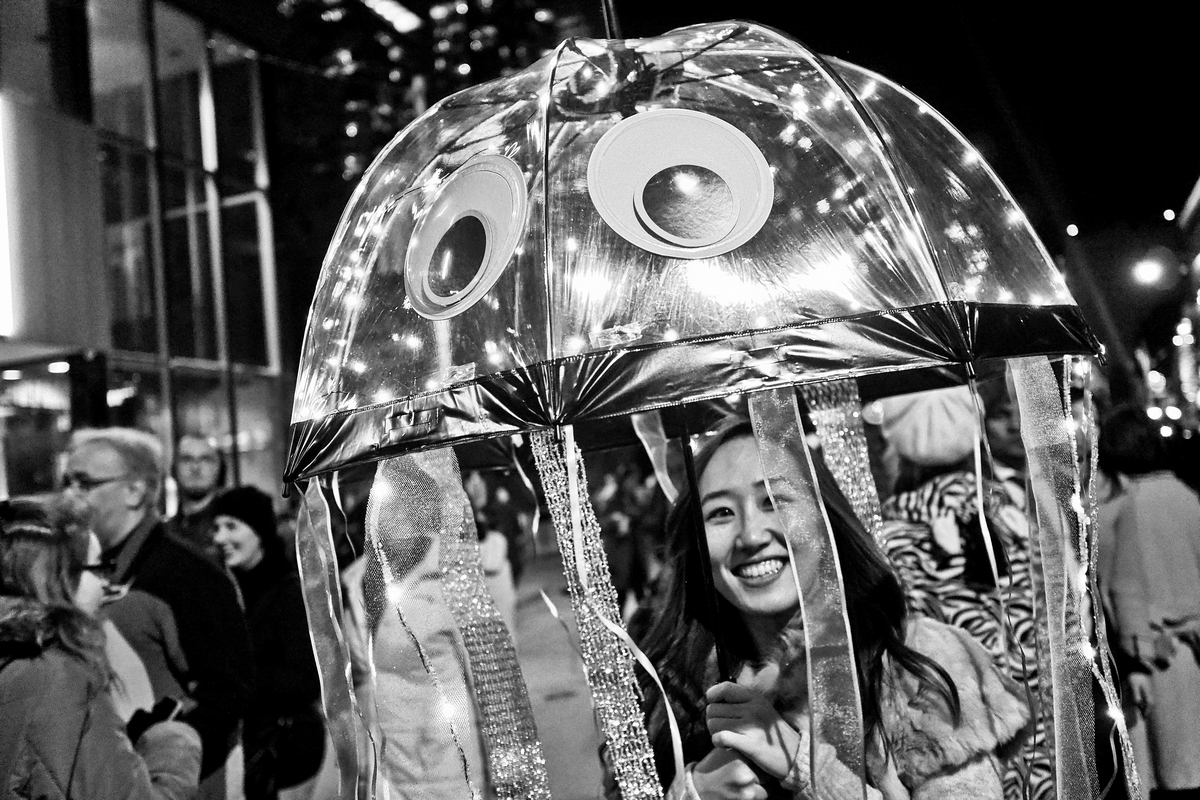
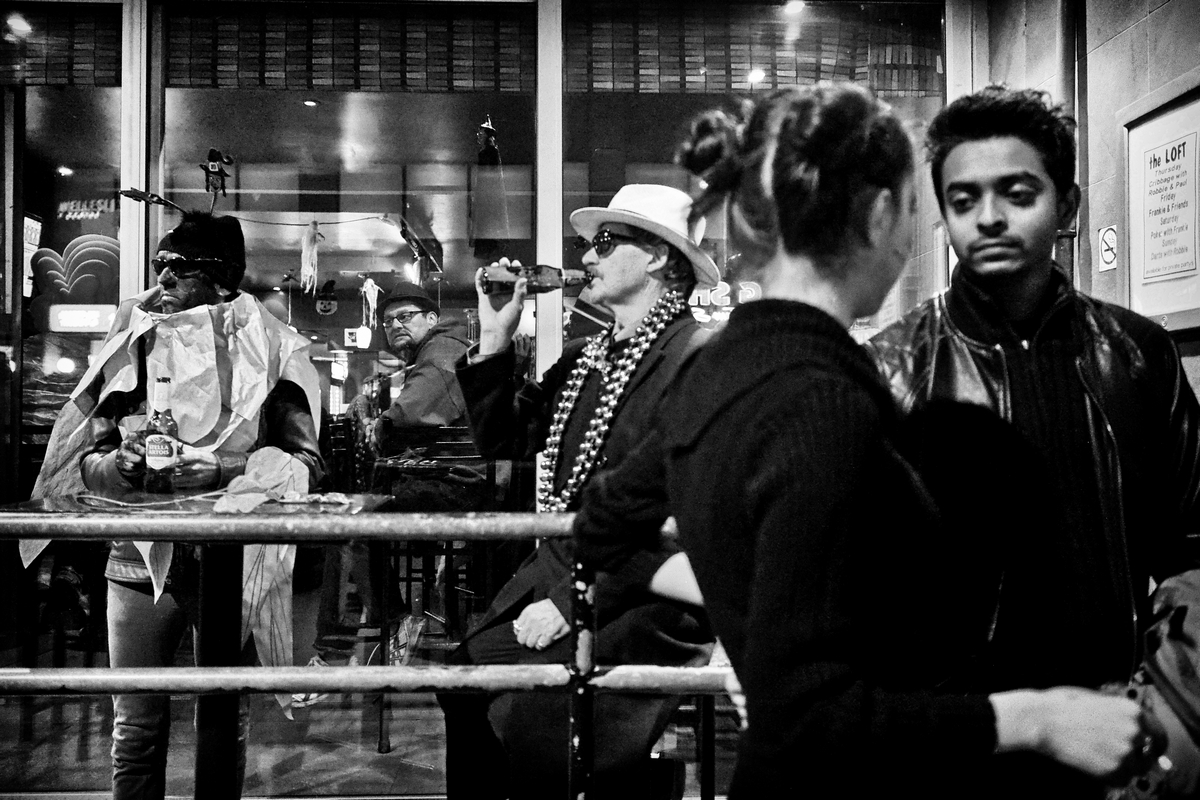
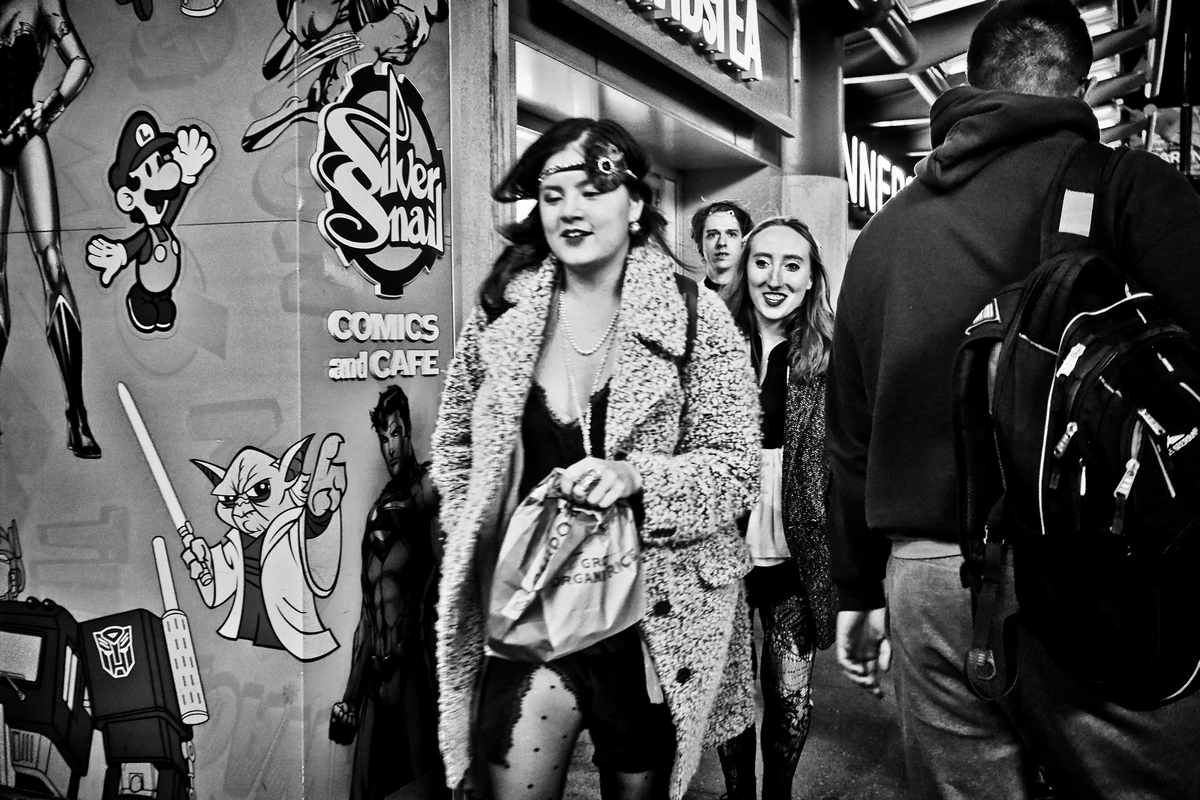
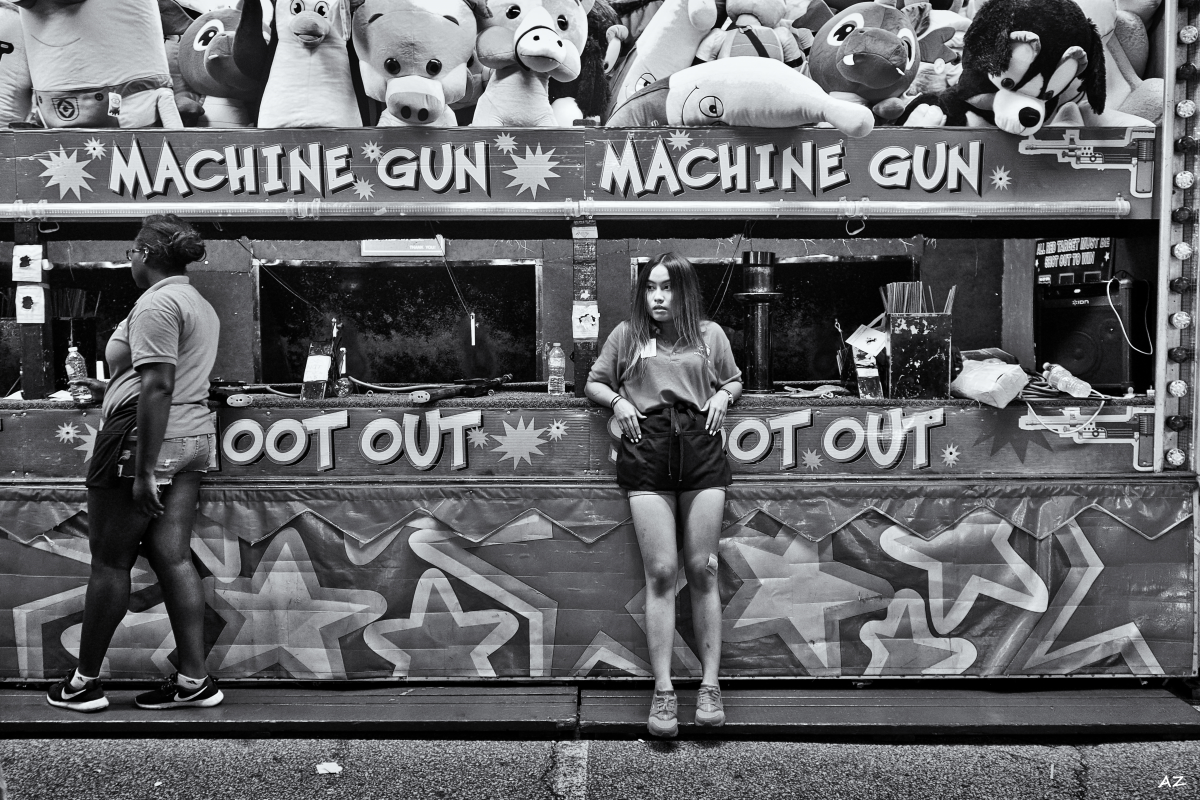
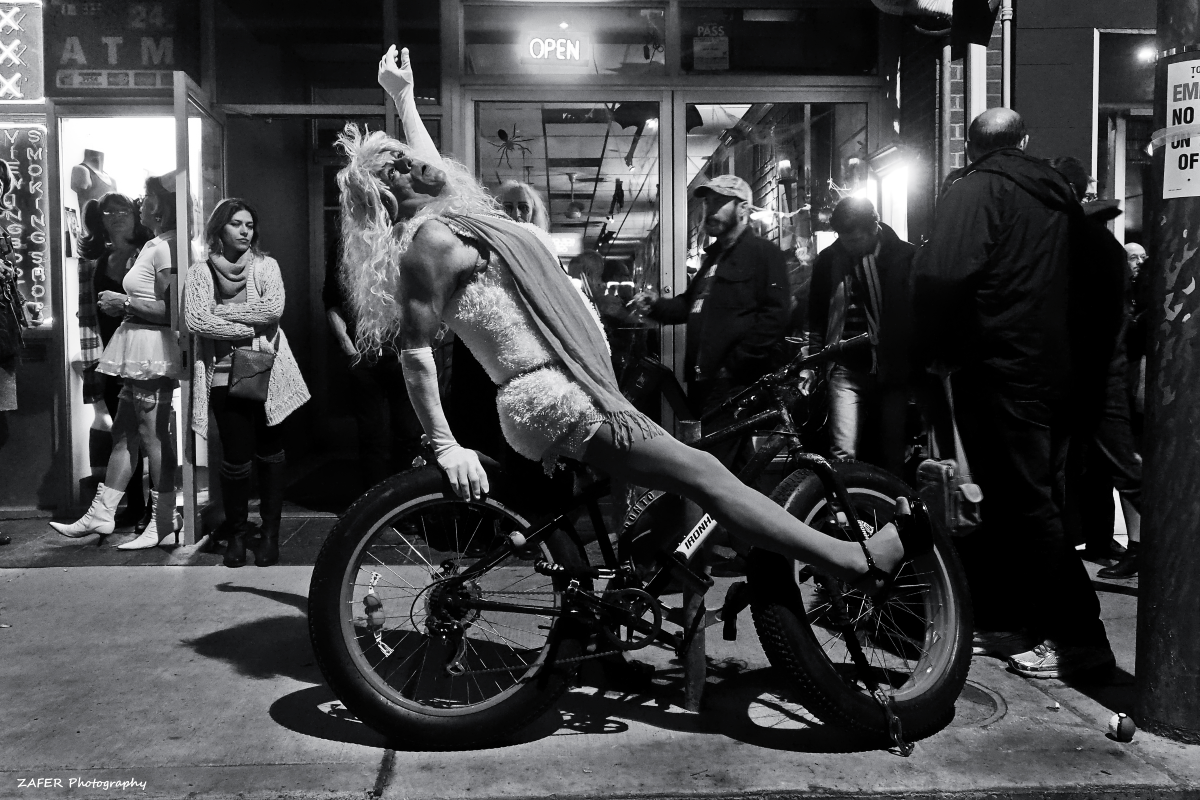
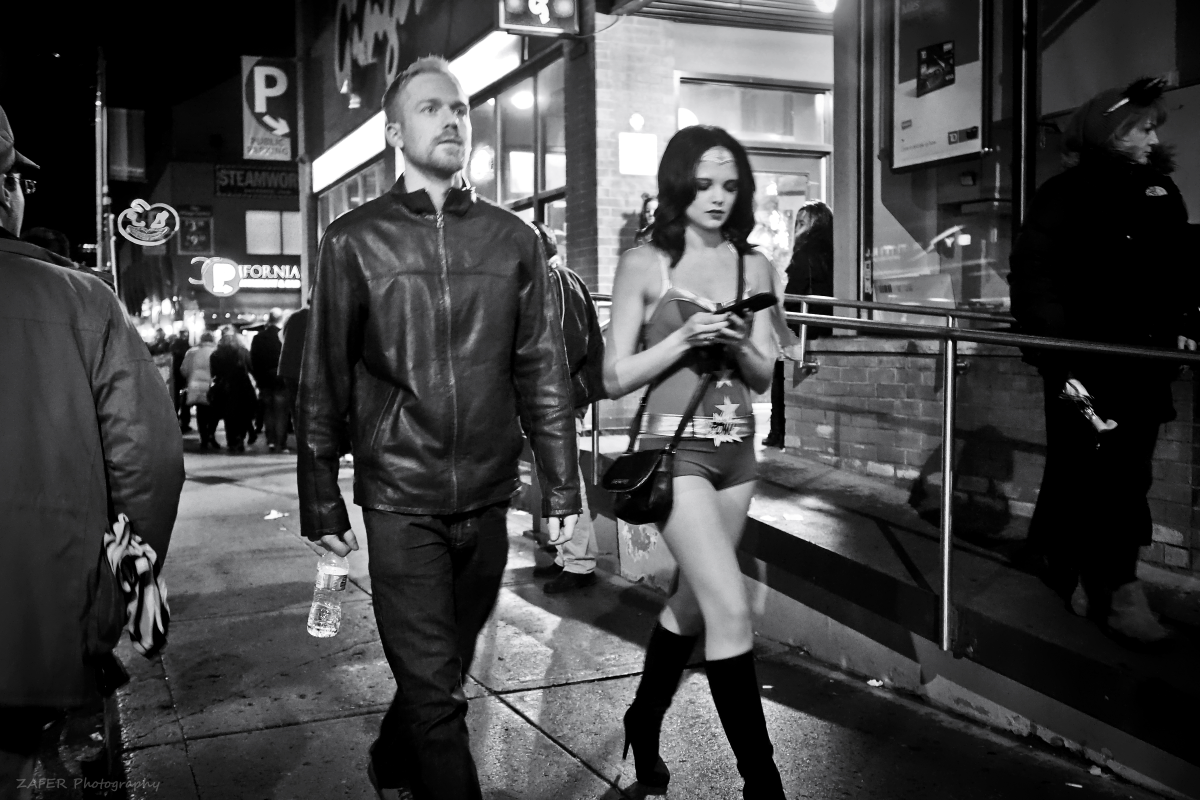
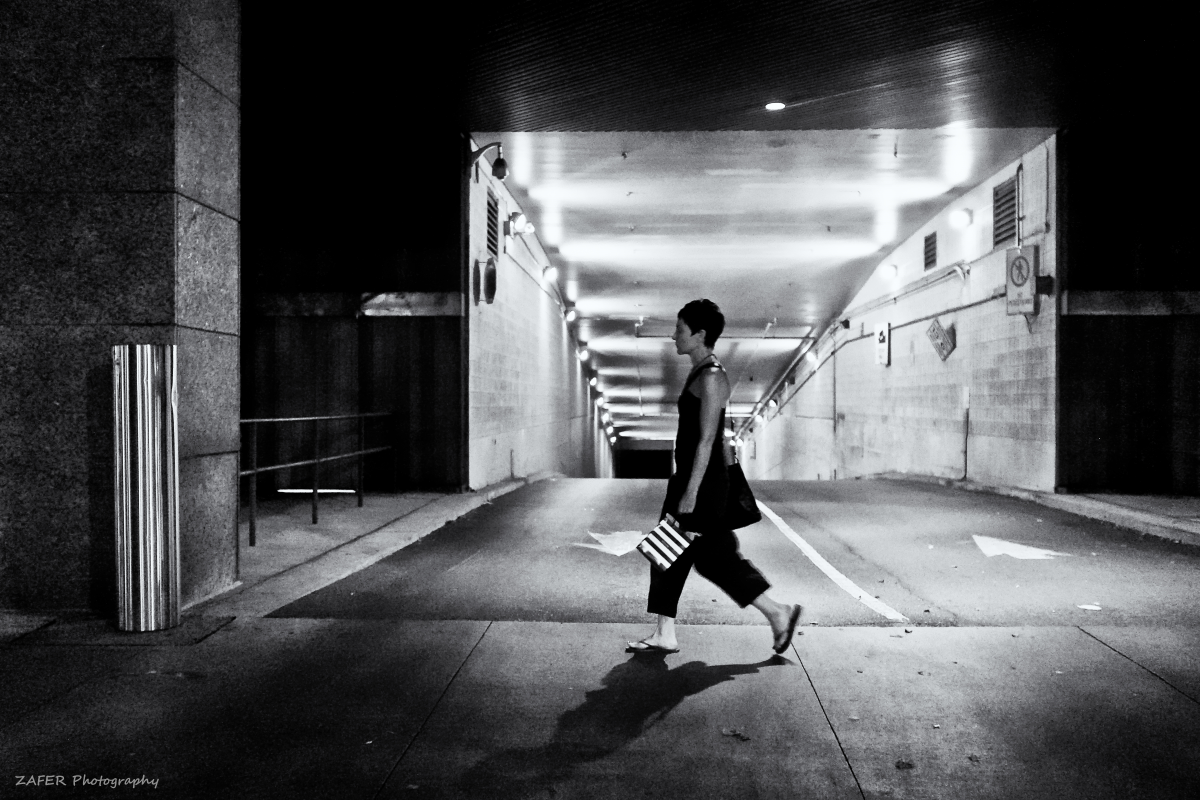
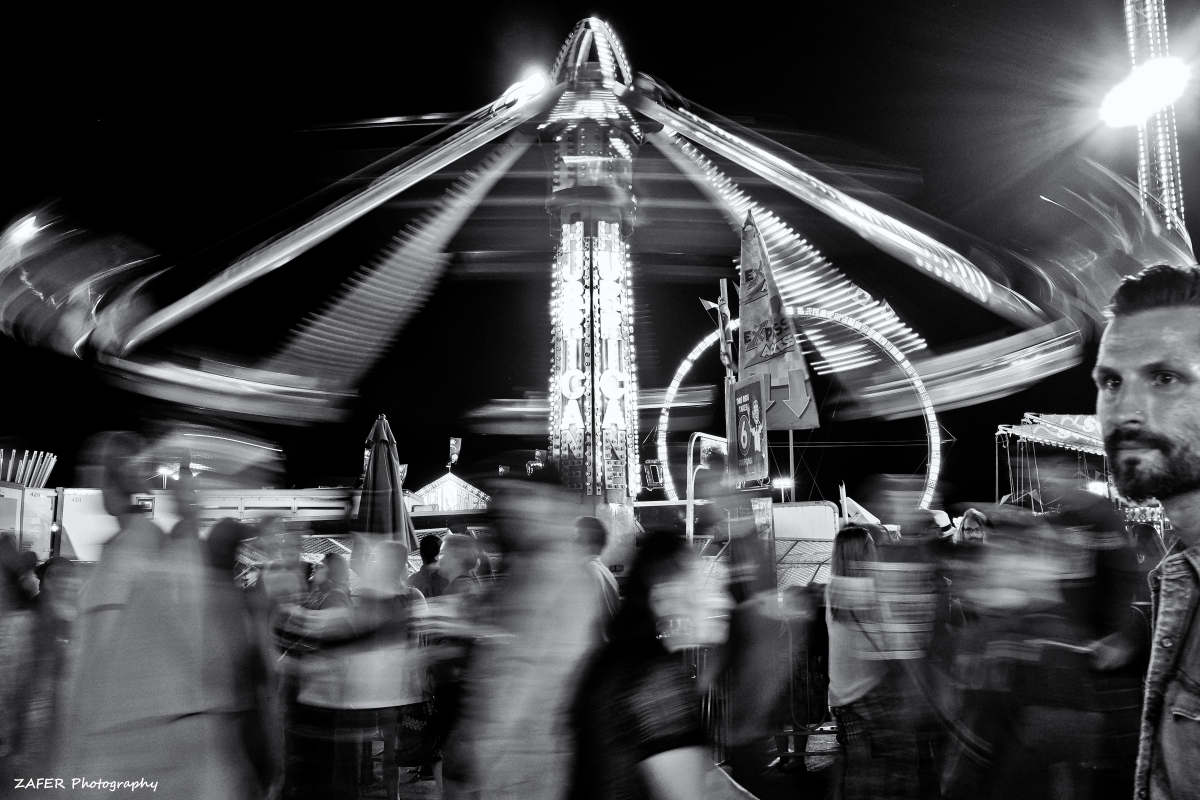
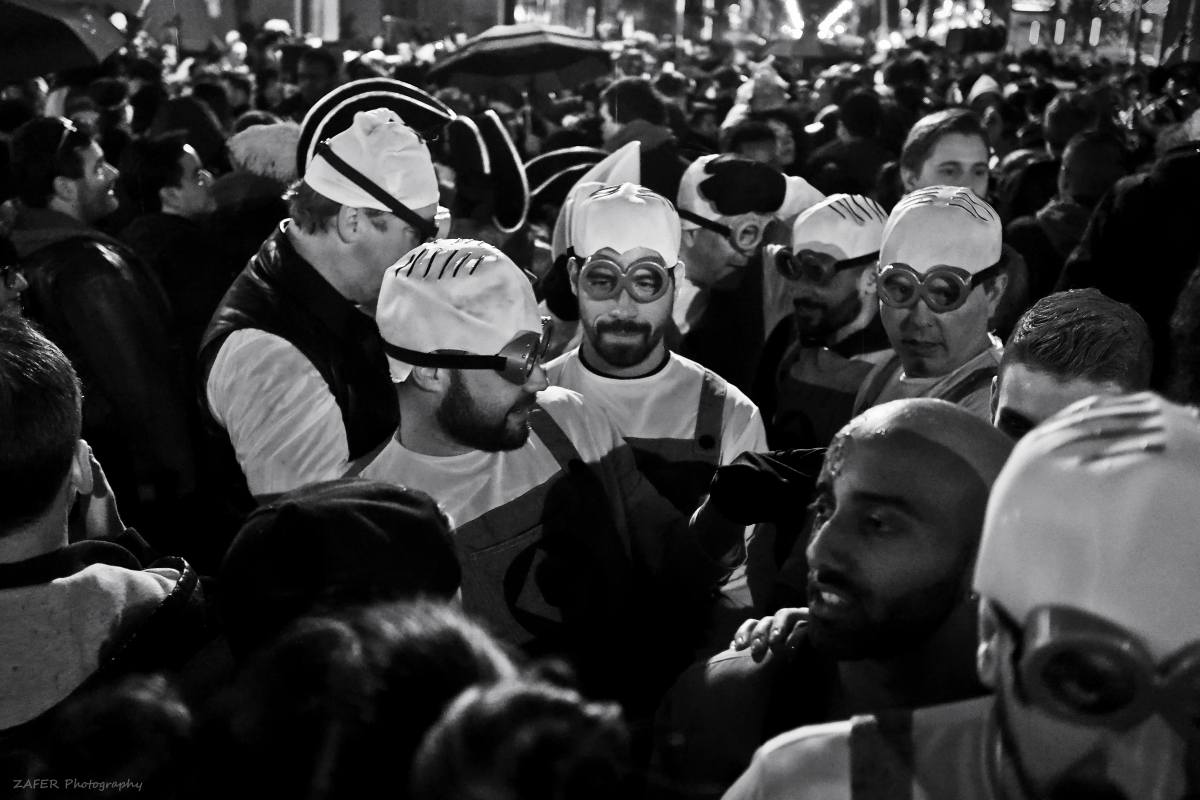
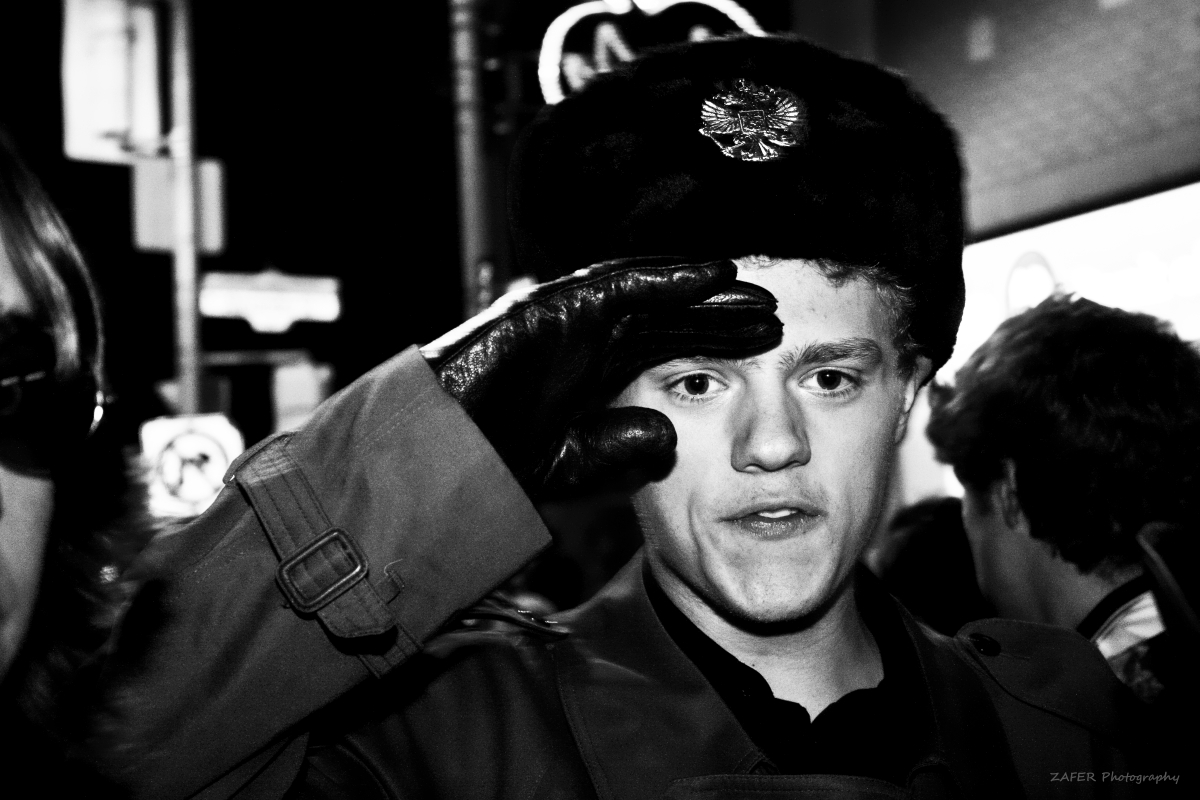
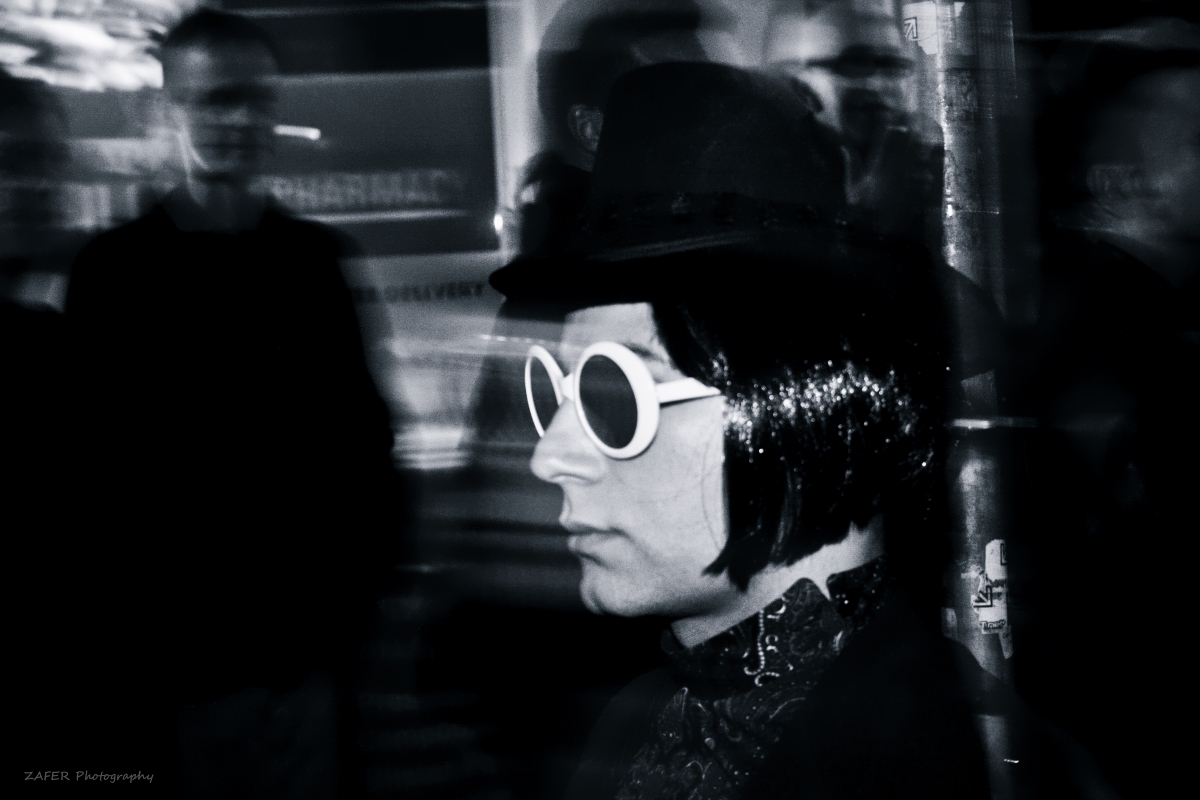
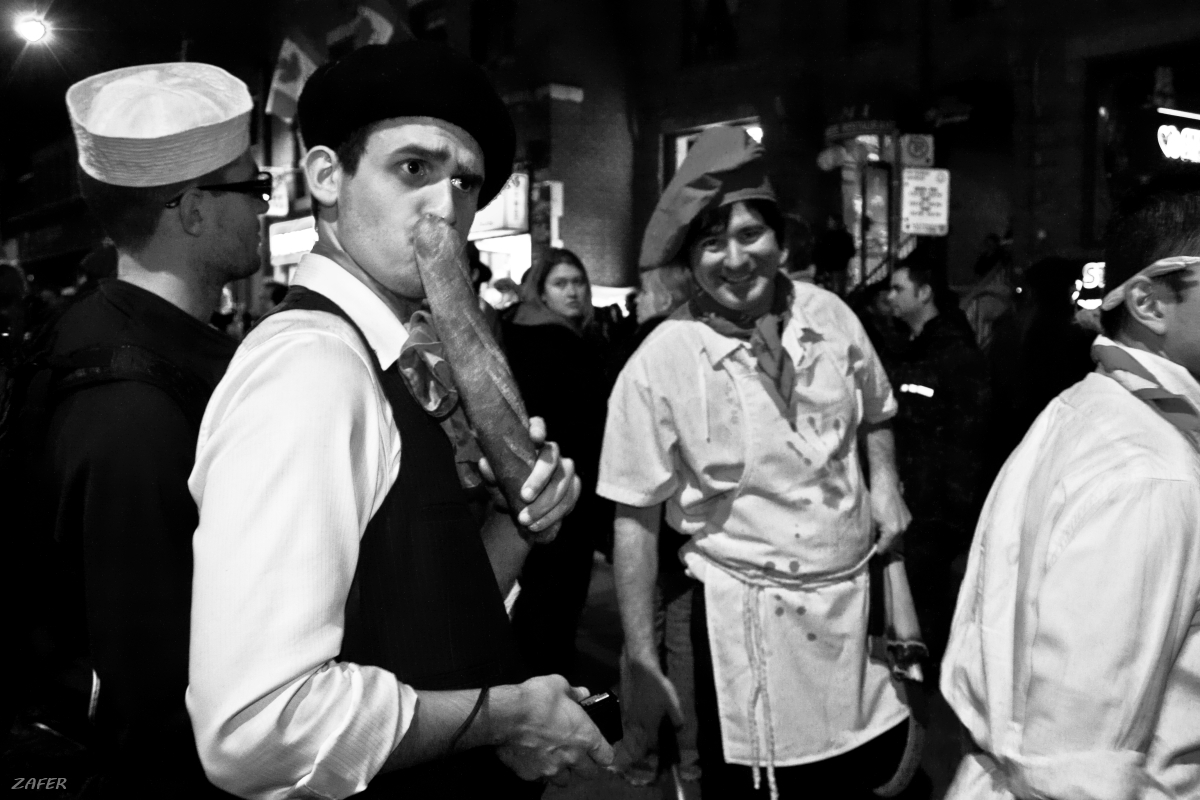
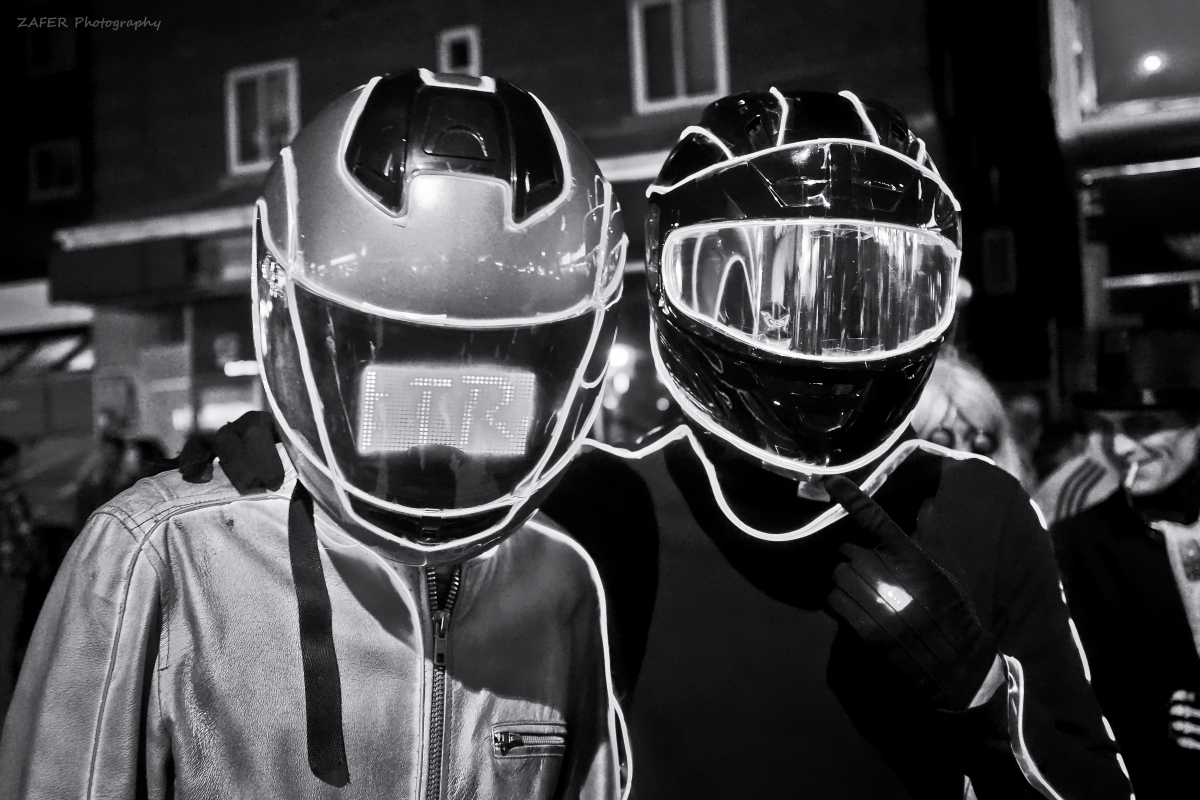
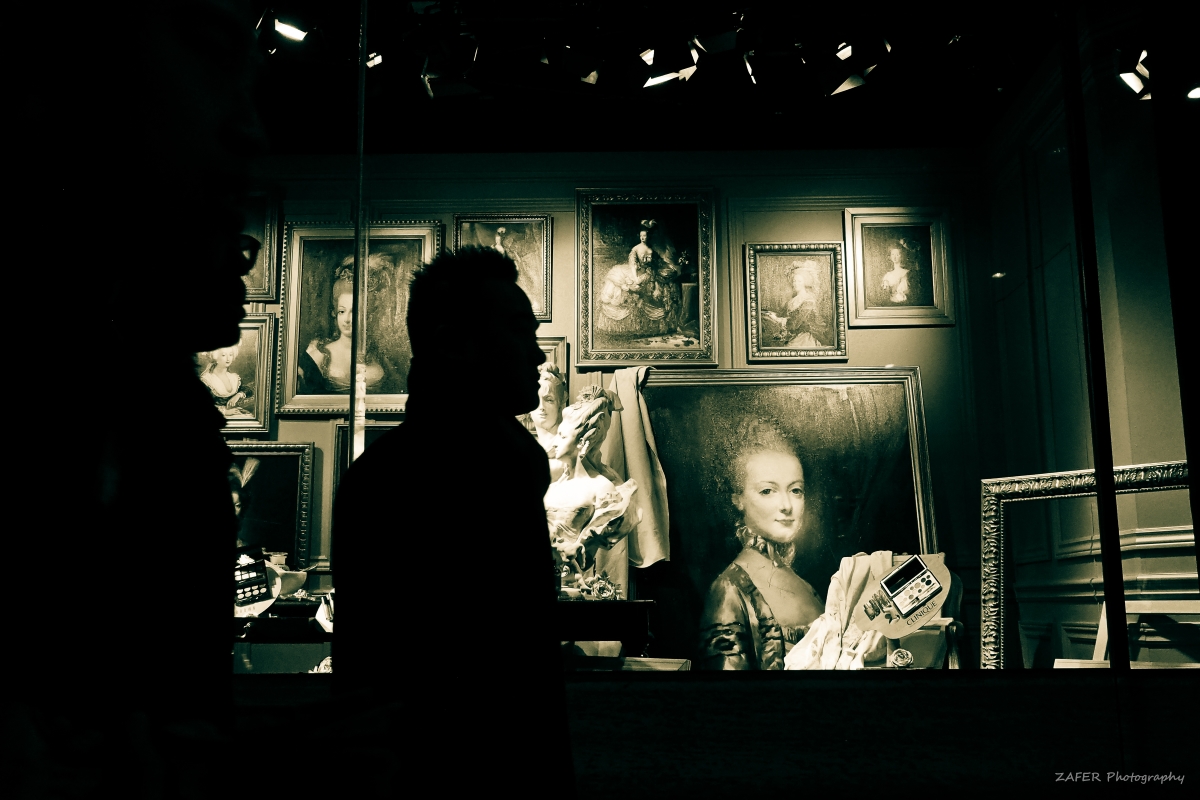
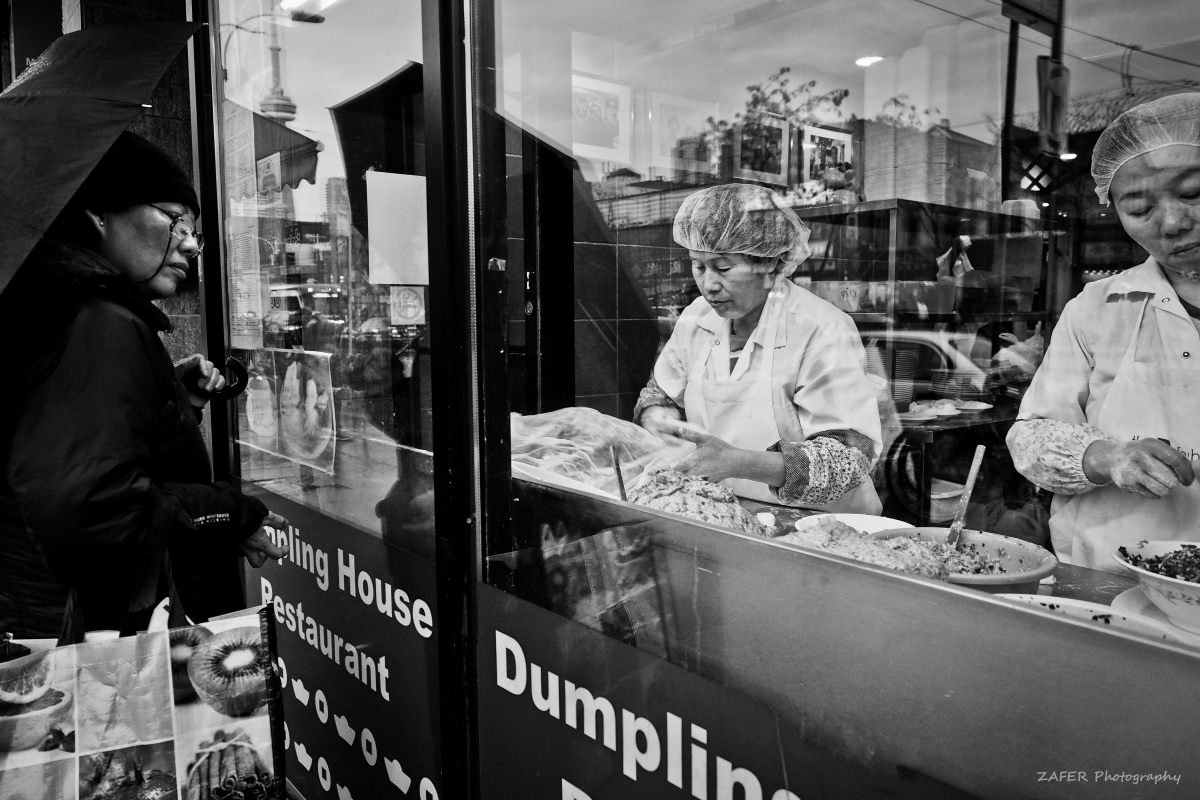
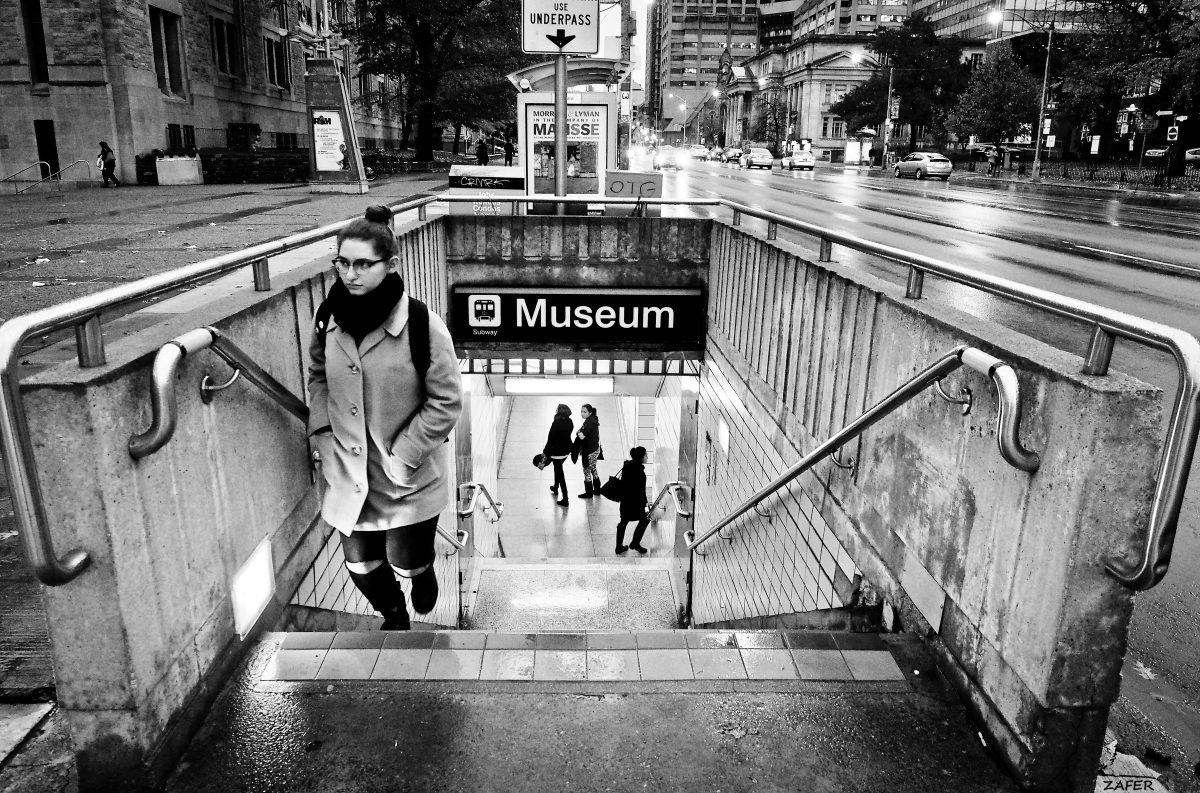
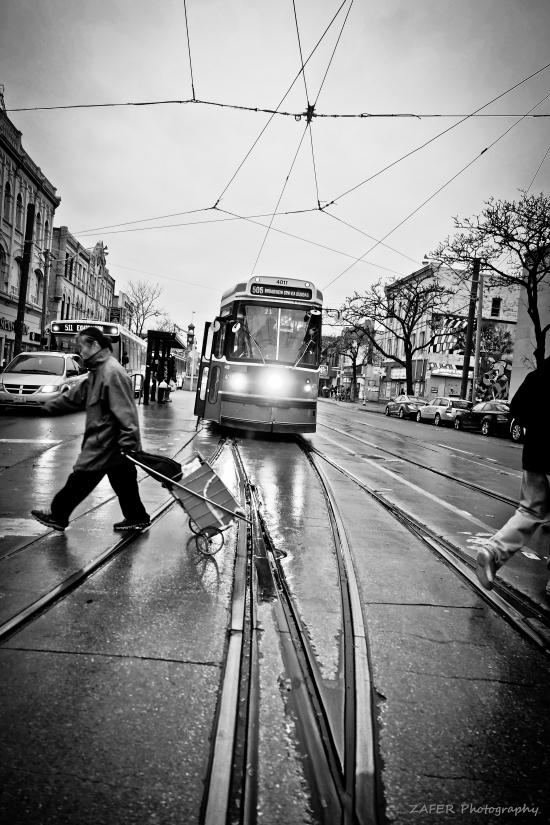


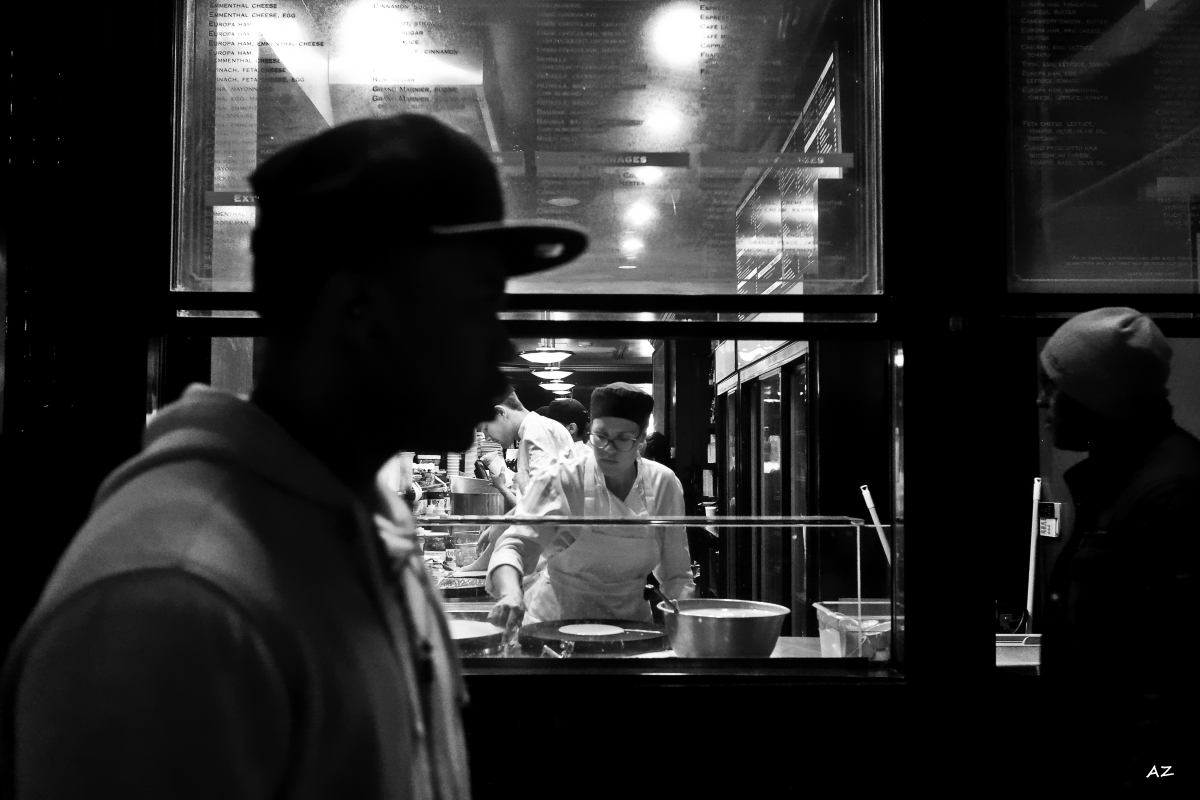
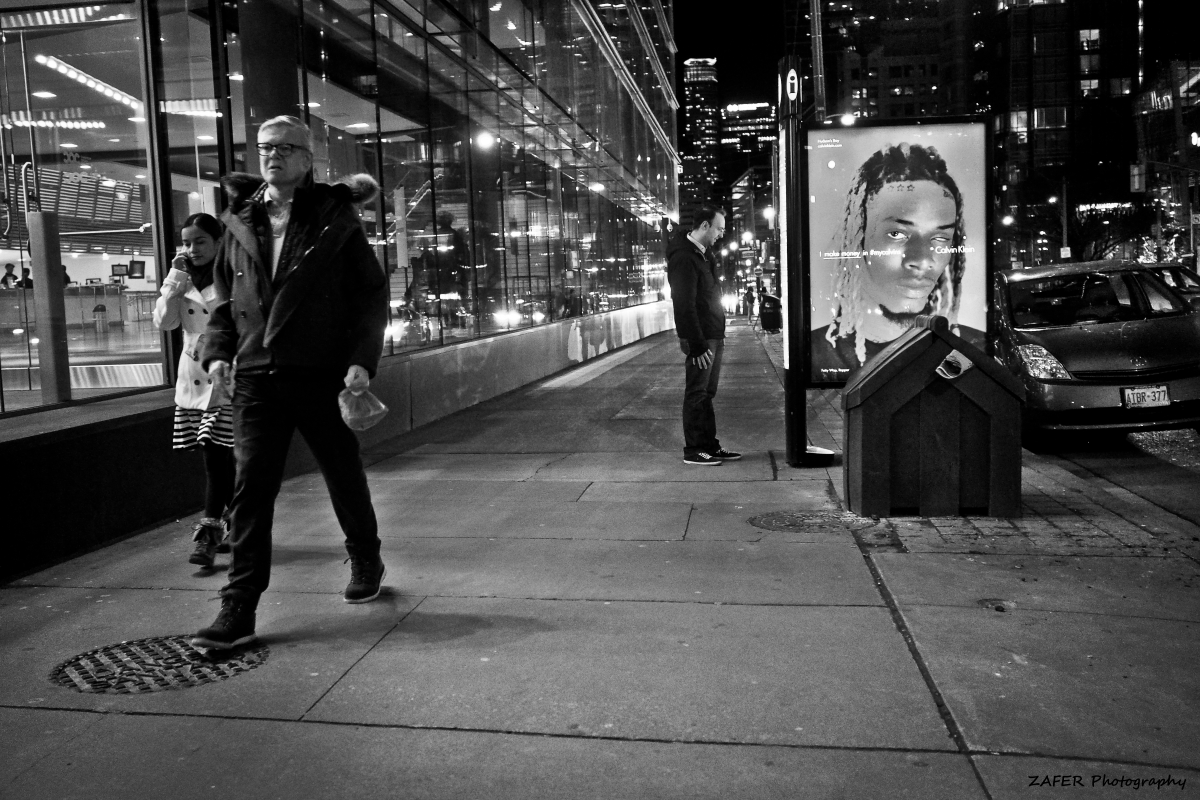
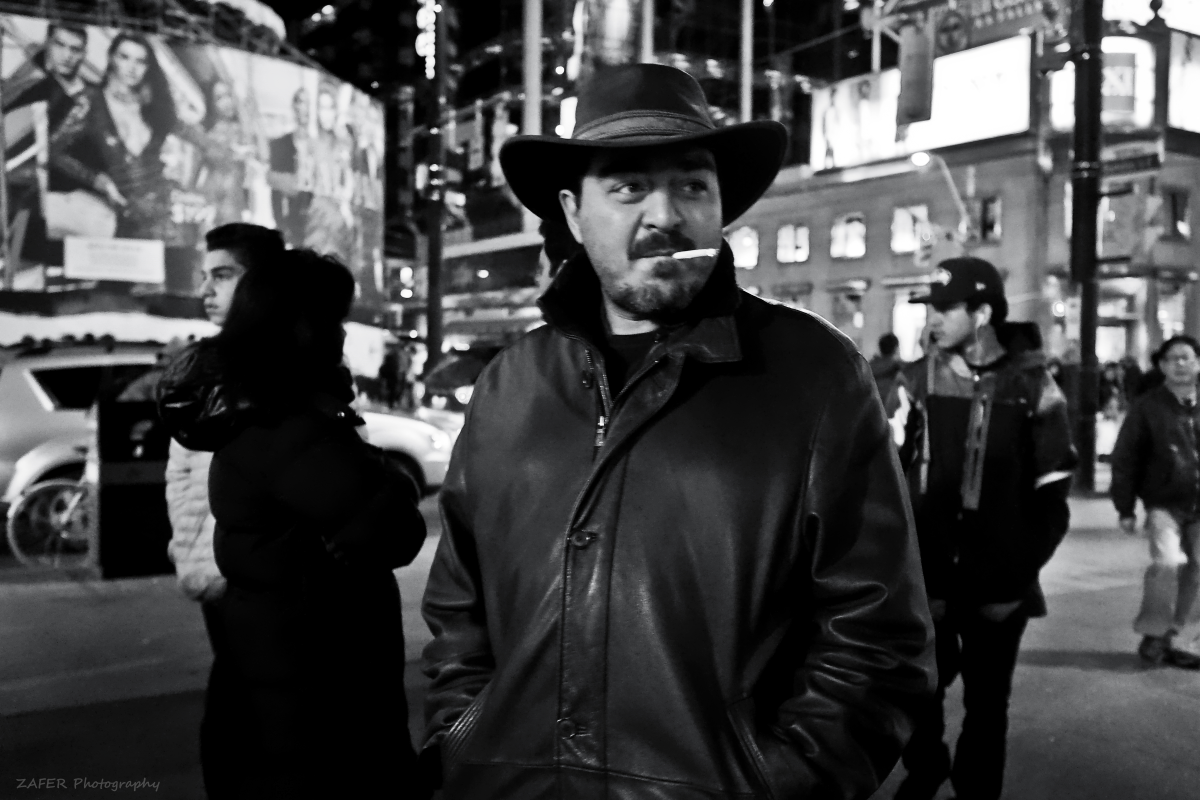
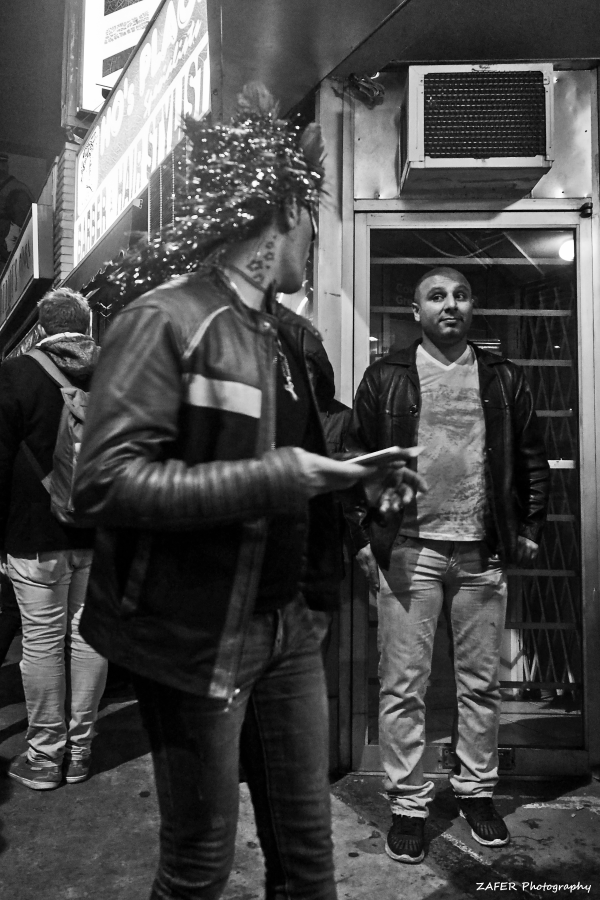
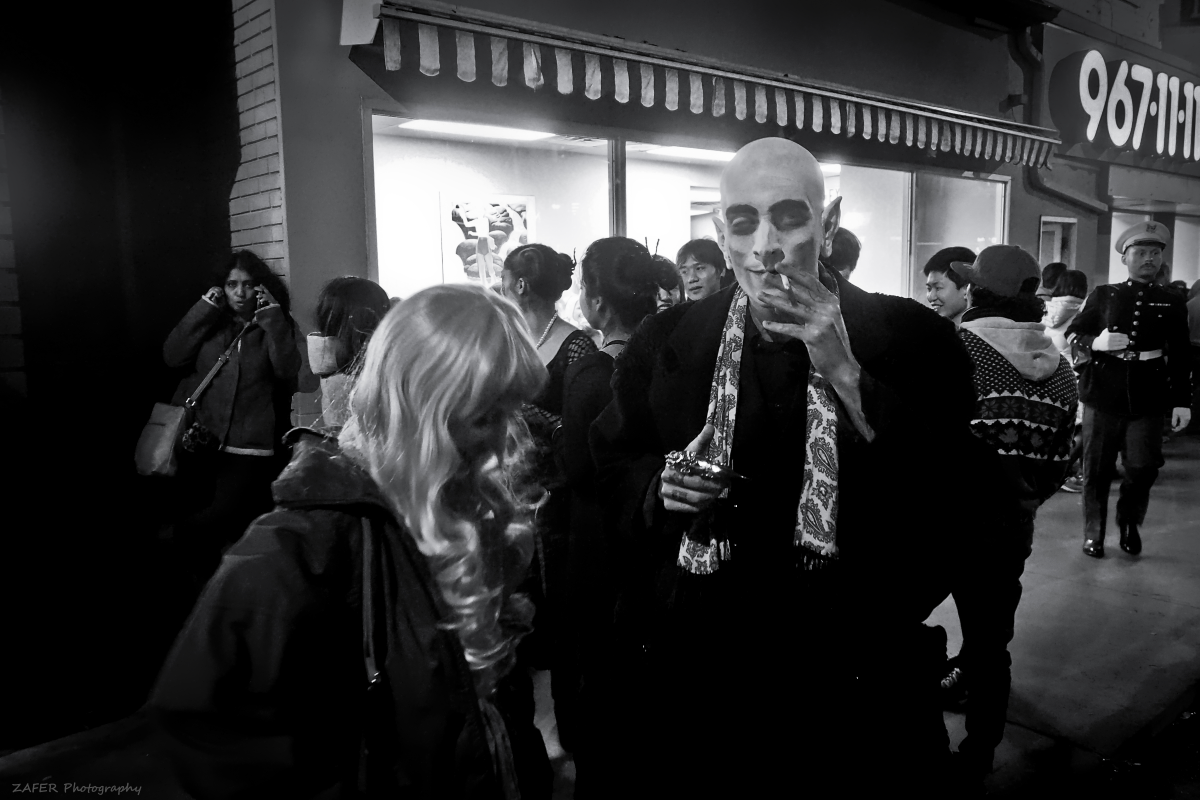
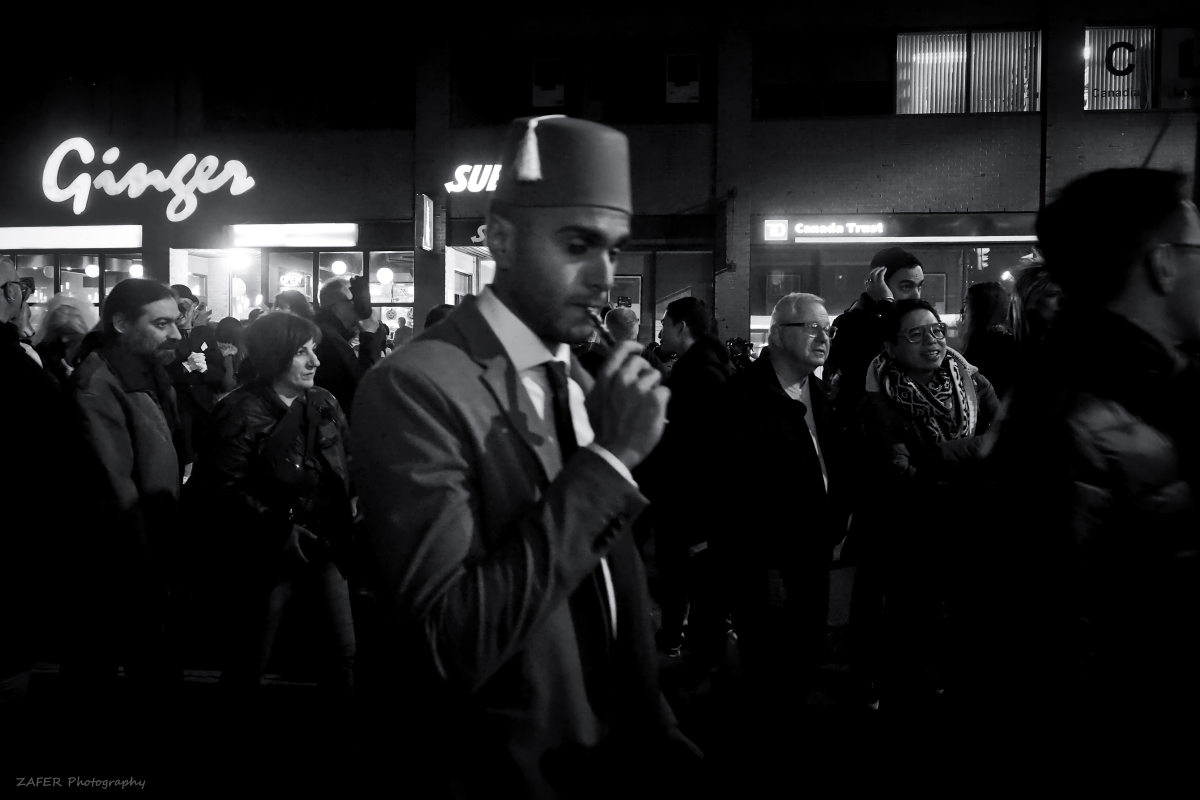
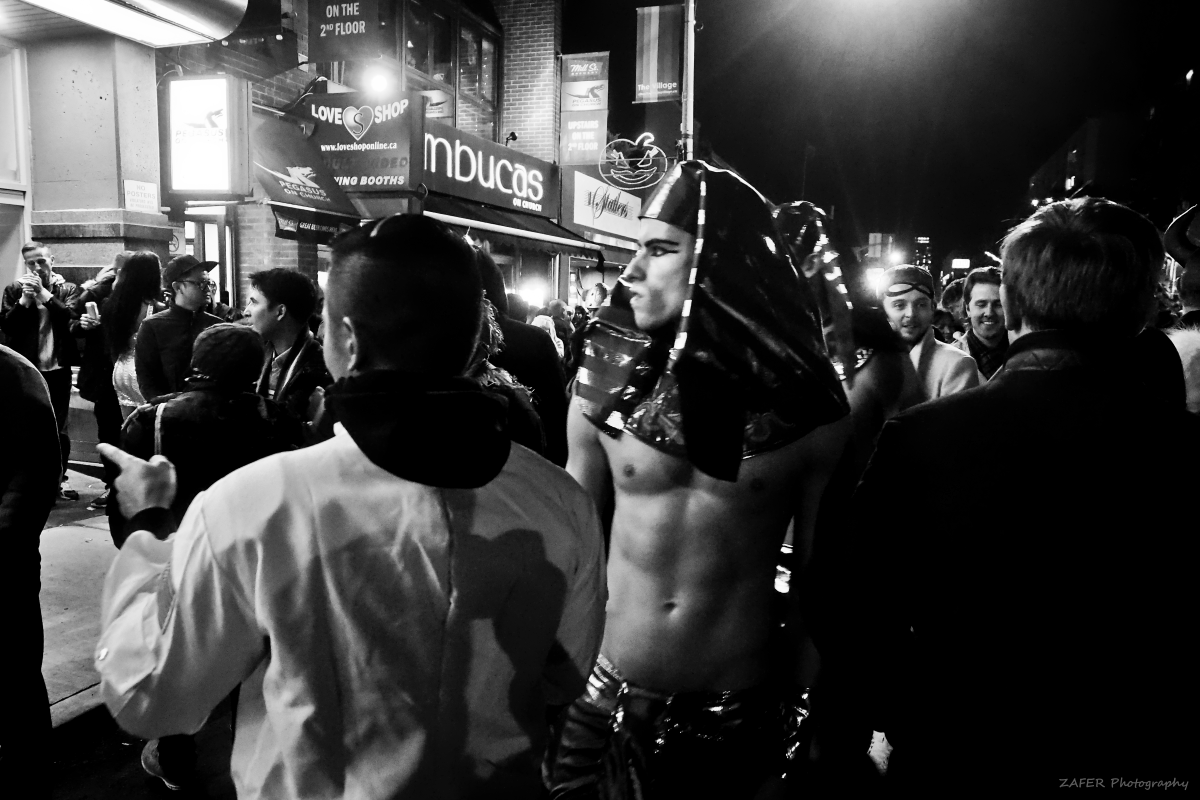


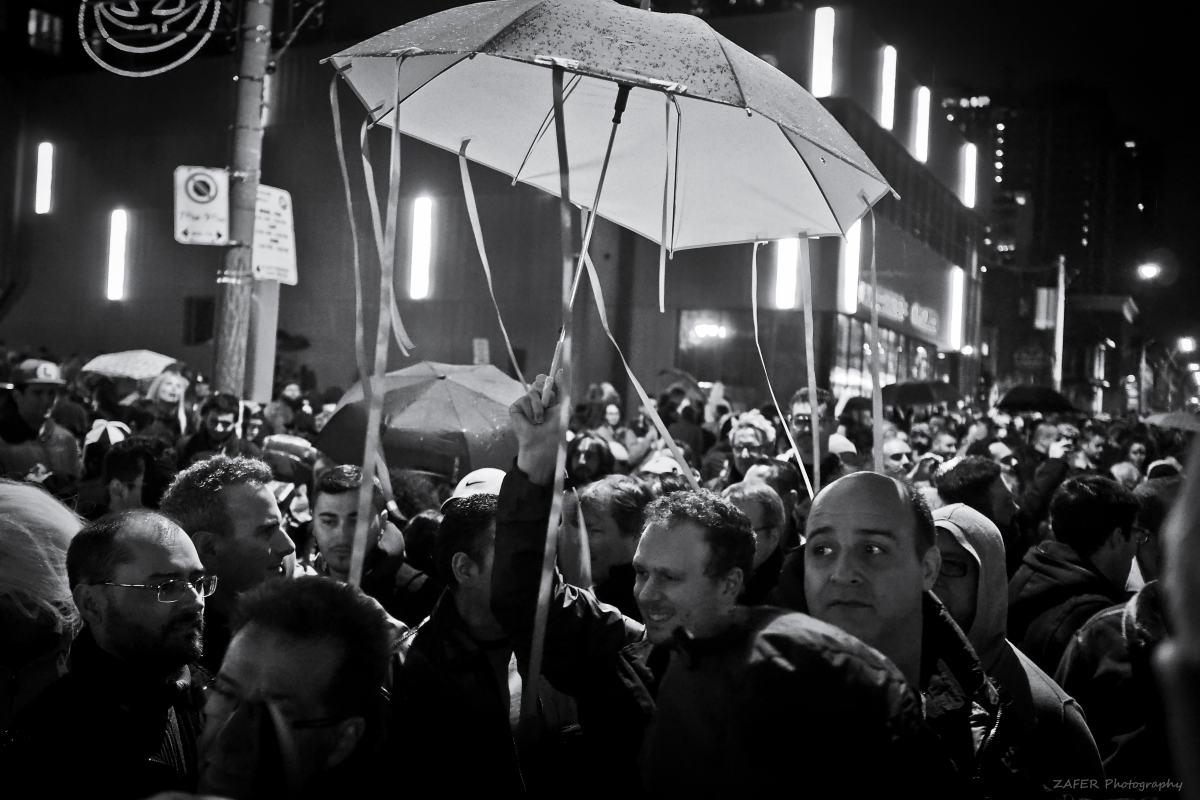
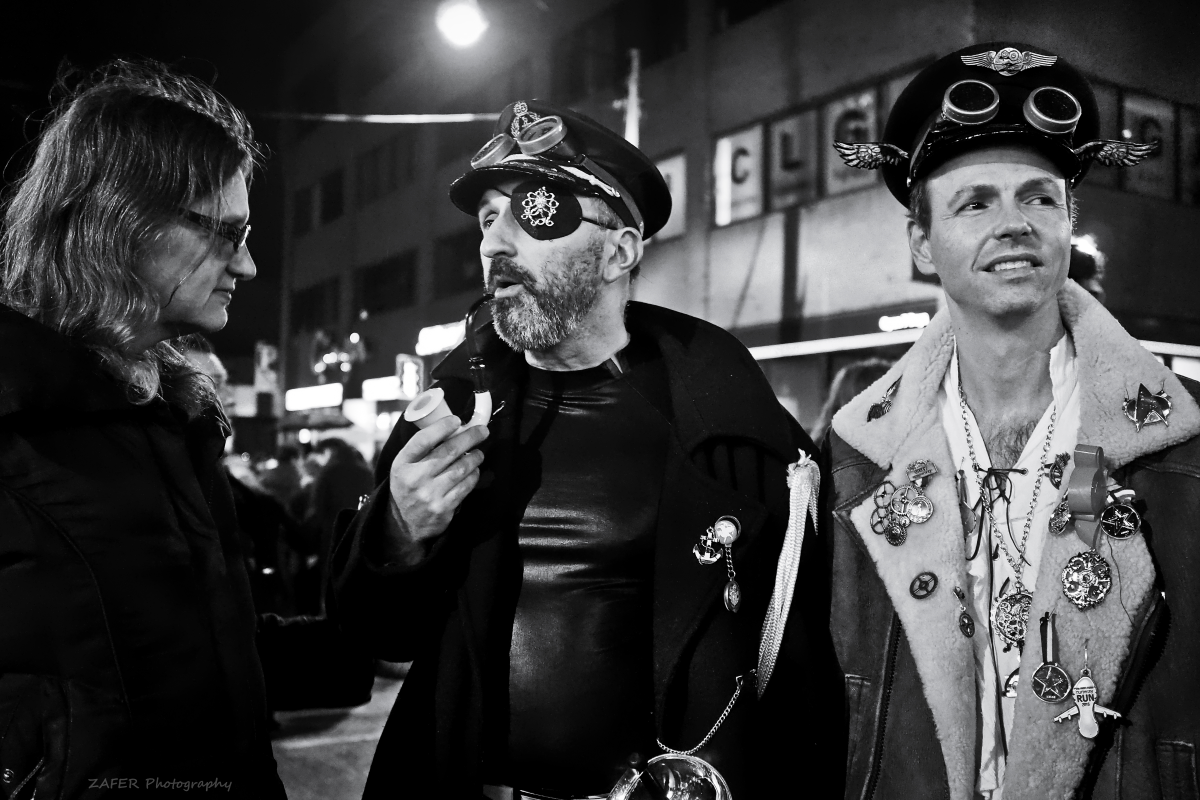
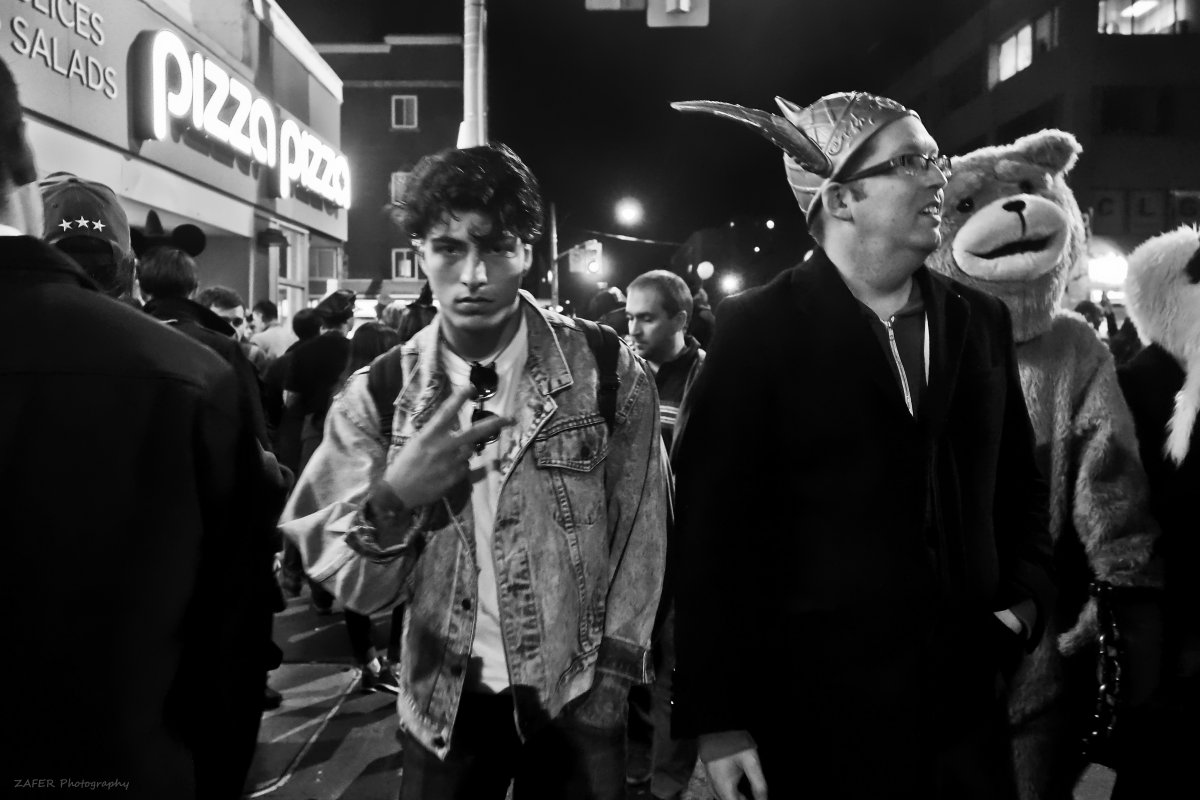
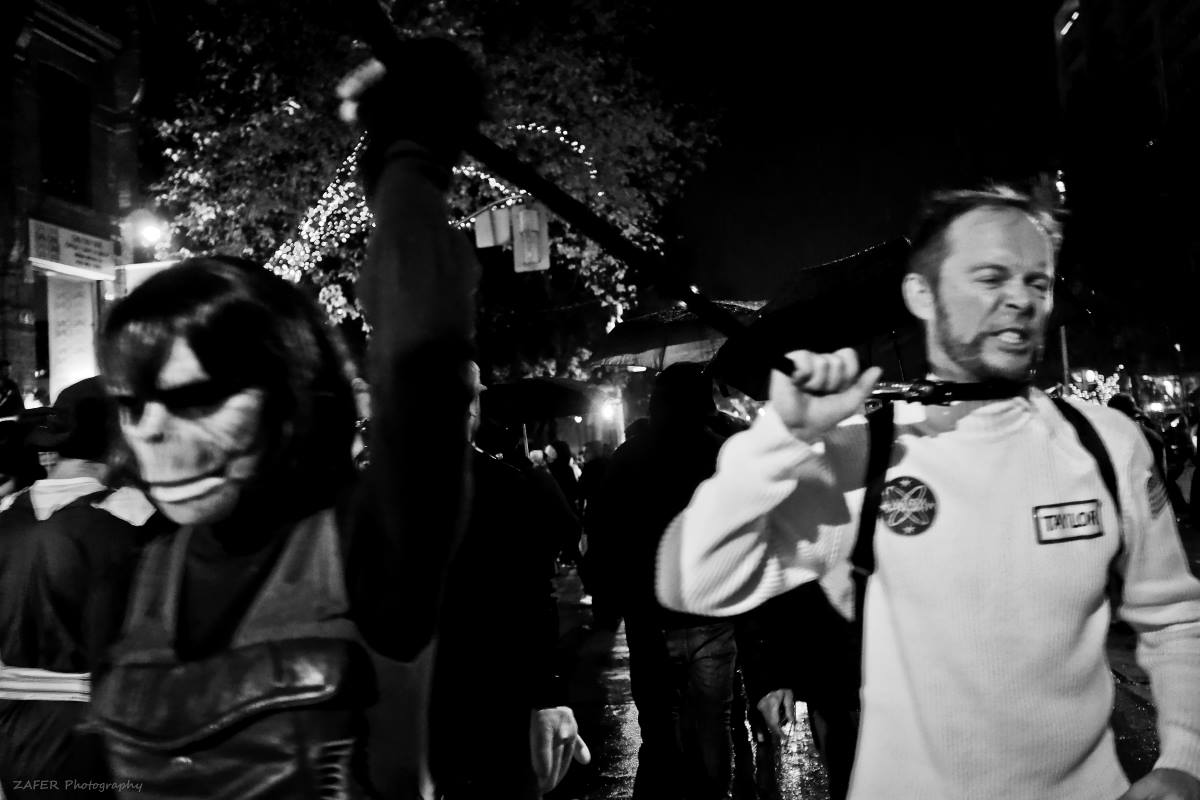
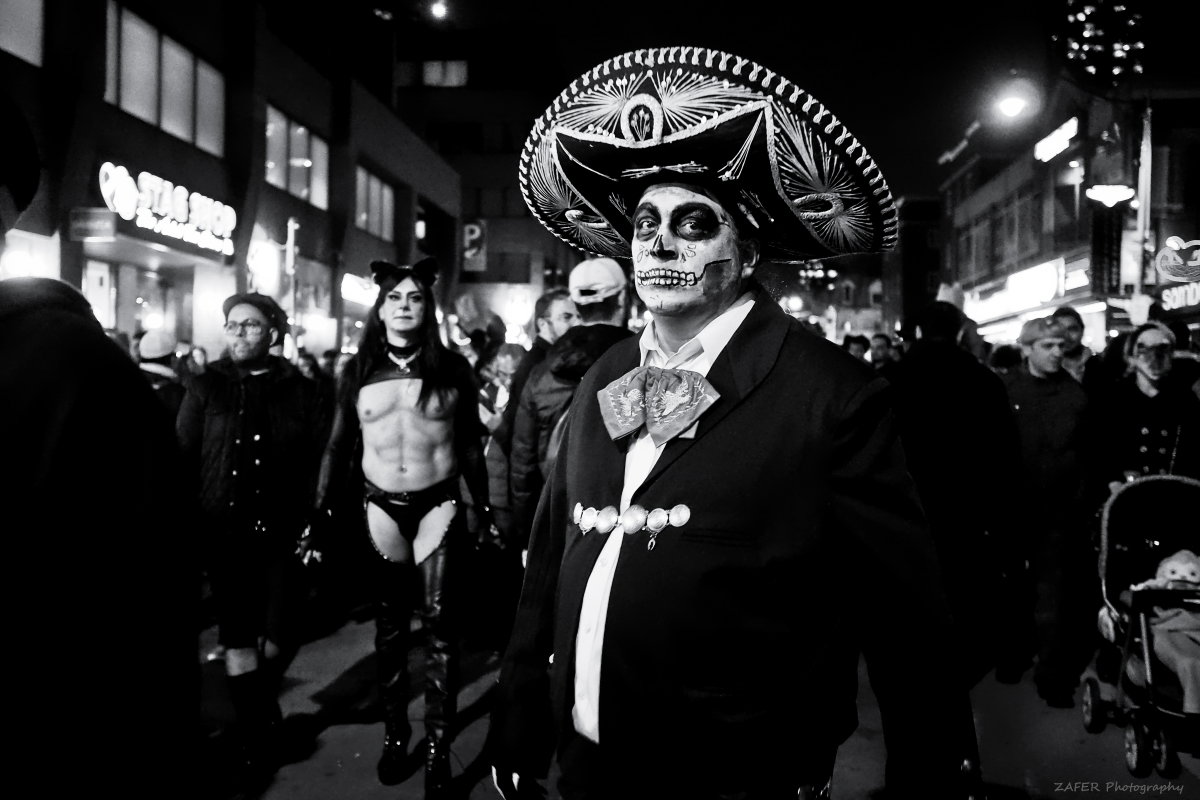
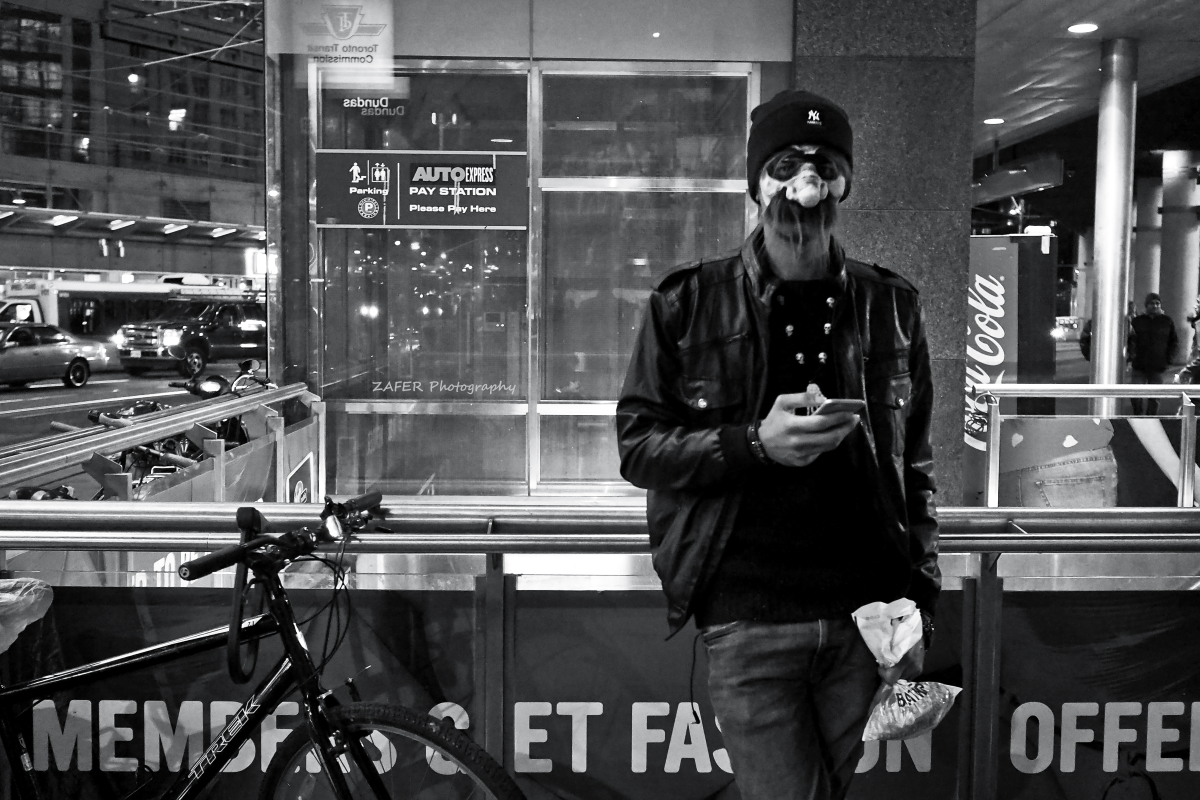
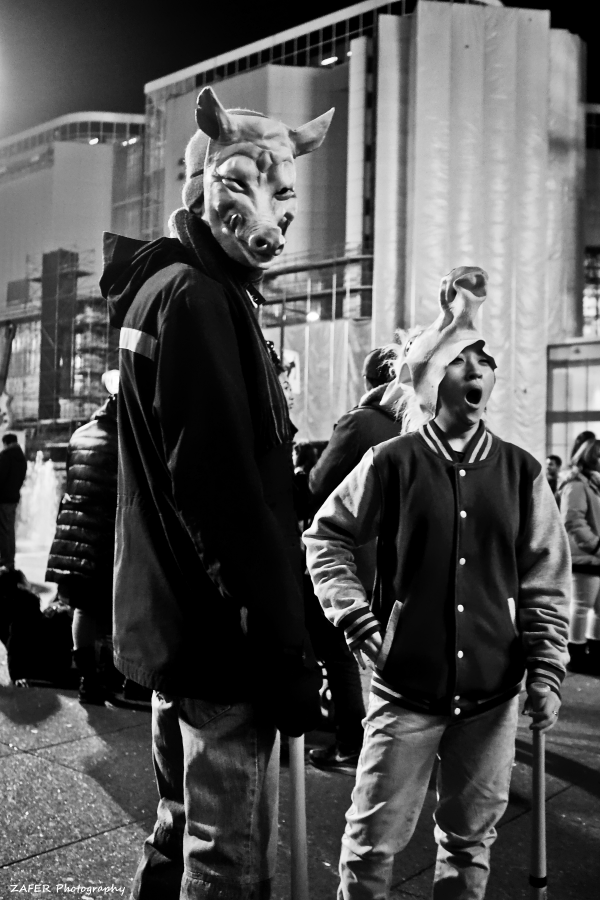
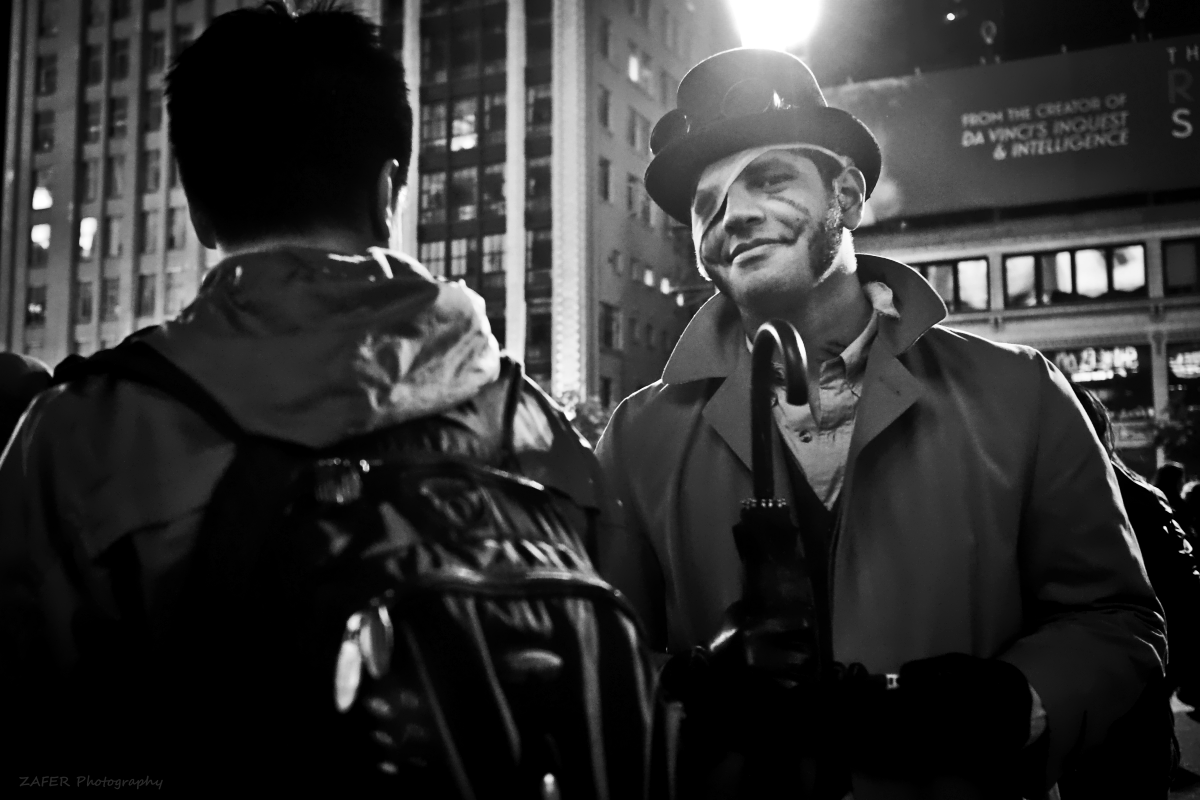
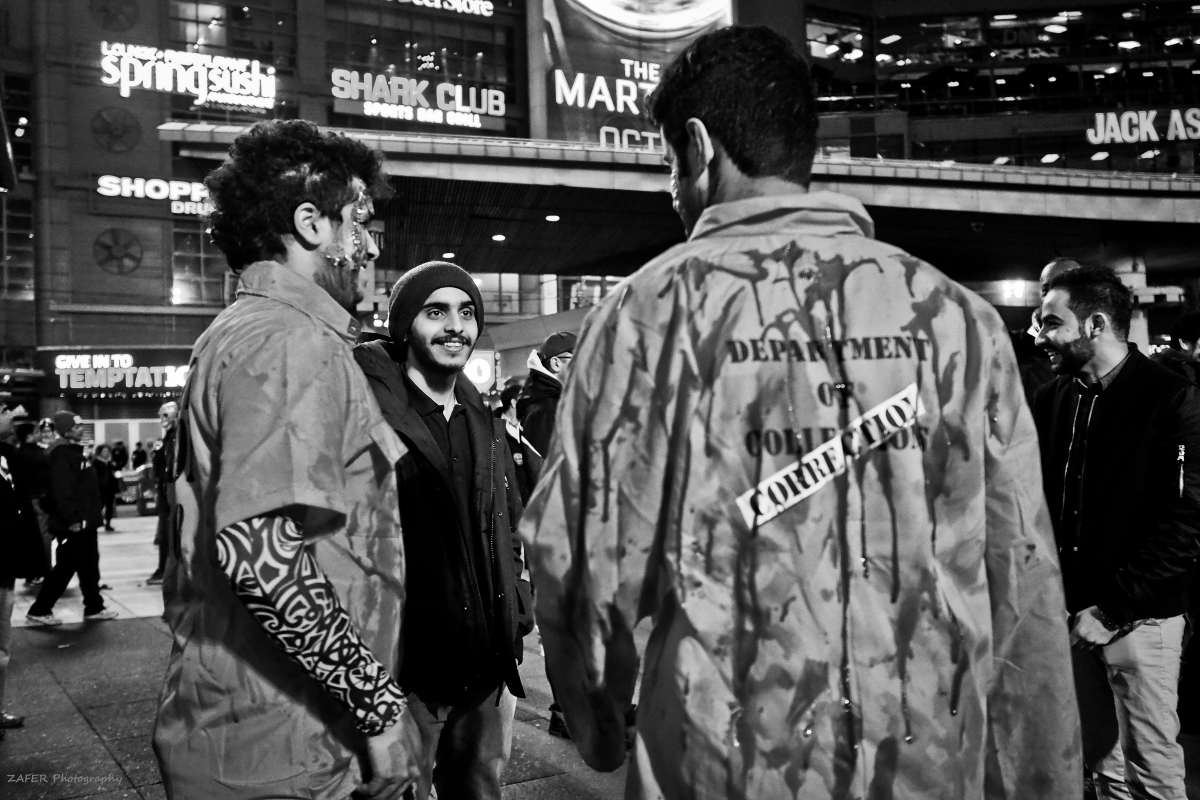
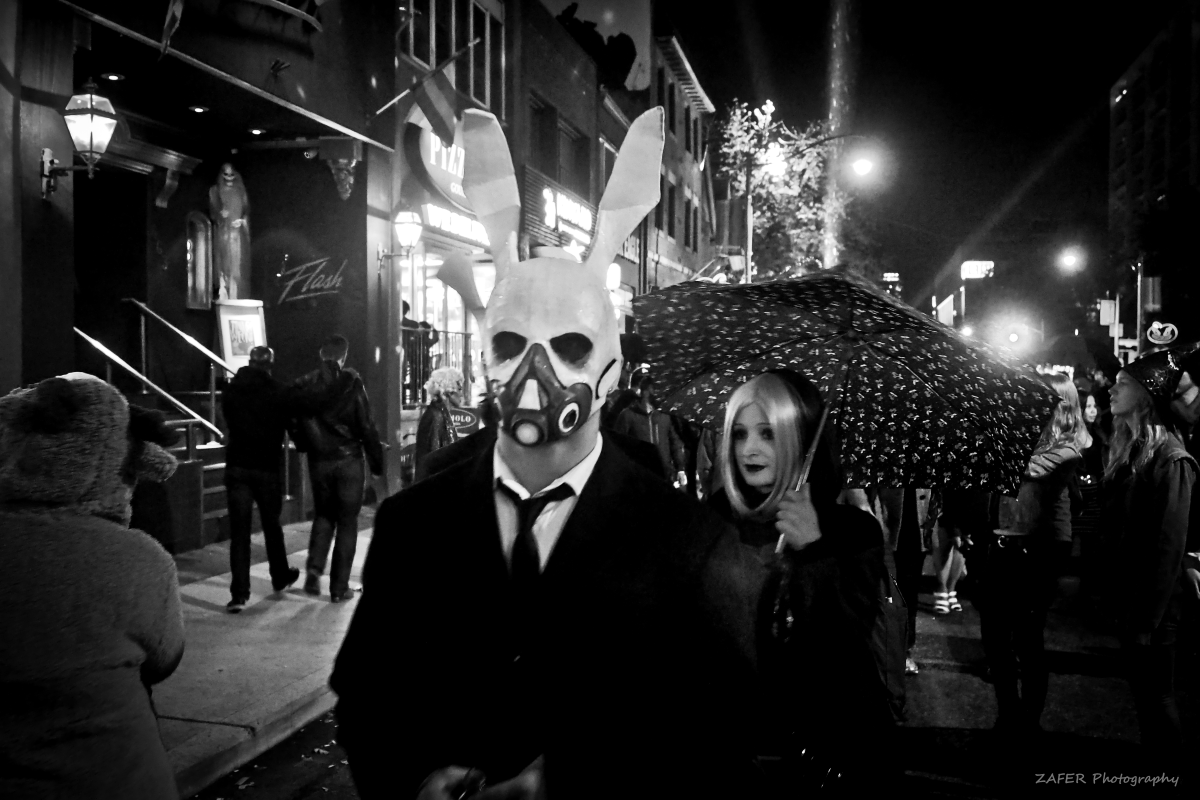
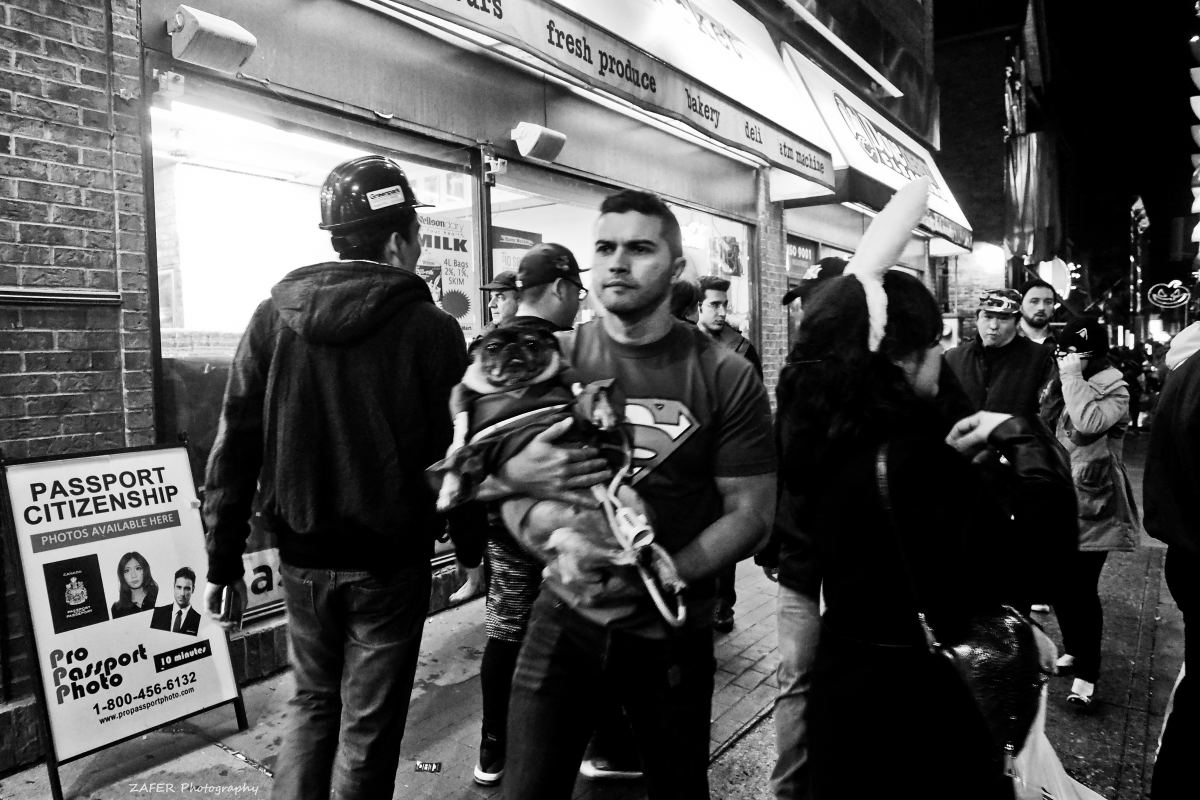
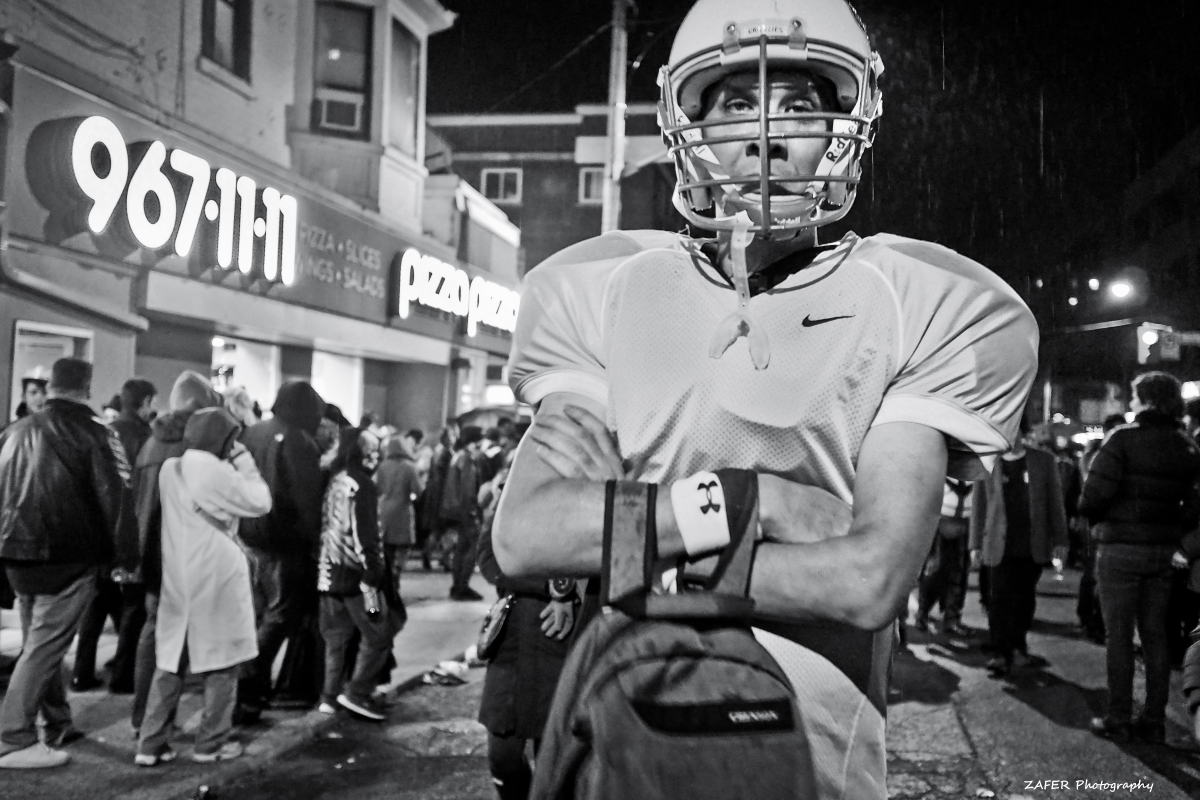
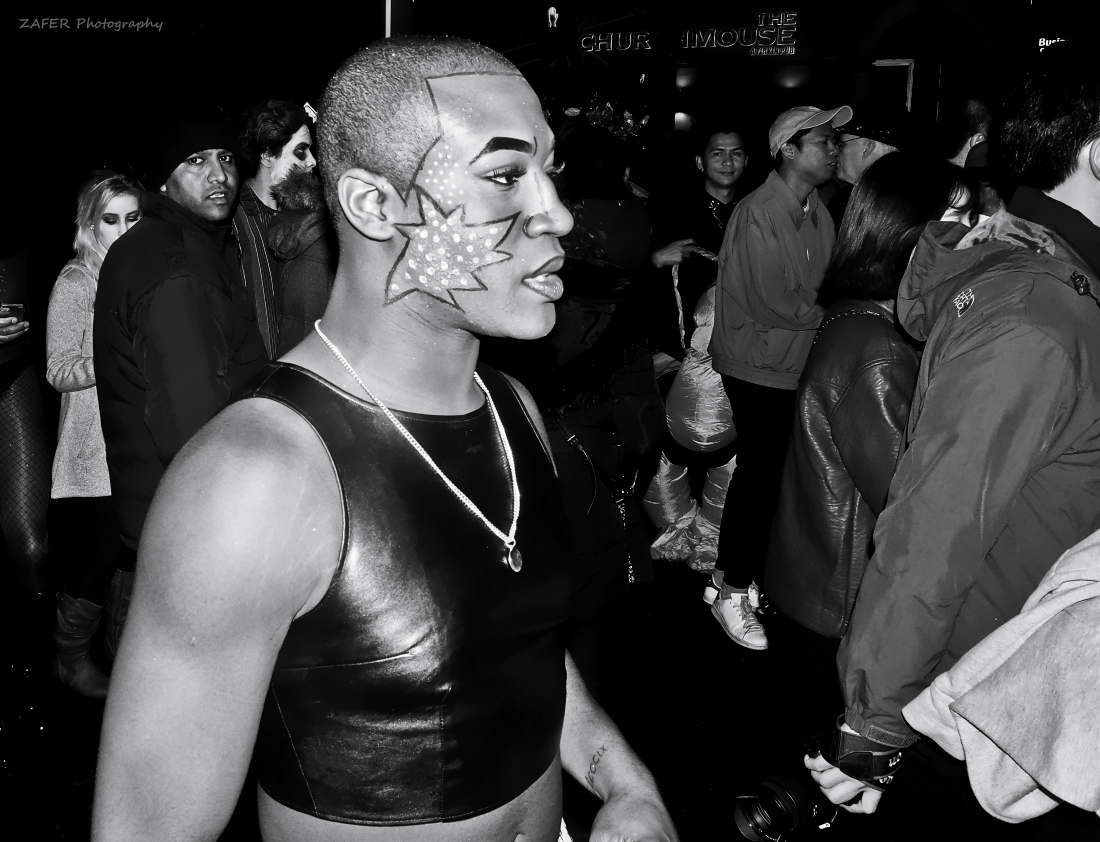
Scroll through the gallery - it may take a moment to load. This series of photographs were shot on the streets of Toronto. ALL photos are candids. Nothing posed, no setups. When I'm photographing in the street I try to frame with a filmmakers eye. I am hyper aware of my environment and the people around me, paying close attention to both the stillness and the movement. In between the smells and the noise, the serenity and the calmness, in the unending ever-changing momentum of the city's everyday oddness, I seek out the serendipity of a scene that comes together perfectly for that rare and decisive moment. The uncontrolled so-called 'reality' as it happened in front of my camera. It is one thing to create a good photograph, it's another challenge altogether to create one that tells a story.
Where do you find your inspiration for making photography?
I find most often inspiration comes when you least expect it and when you’re most receptive to it. All artists have days when they feel uncreative or uninspired. Sometimes the days become weeks, or even months. Lack of artistic inspiration is normal. These cycles come and go and are only to be to expected. Artists will do all kinds of tricks to try and break these spells. I’m always interested to know what other creatives do when these dry spells linger on. How do you overcome them?
I think it is good to have some kind of daily routine. If you have a dedicated space, a den, office or studio space or even a corner of your living room in which to do your creative work, I think it’s important to spend time there. Every day. Surround yourself with personal items you enjoy looking at (books, sculpture, art on walls, pictures, trinkets, things you collect etc) and the tools you use to create (cameras, lights, lenses, journals, pens, pencils, sketchpads, paint brushes, a guitar, computer/tablet etc). I usually have my camera equipment out of their bags on a dedicated table in my studio. It’s where I sort out my gear. In view and accessible. At least the gear I use most often when I hit the studio or the streets. If they are packed away in bags where I can’t see them, this isn’t a good thing for both inspiration or motivation. Especially motivation. I know this about myself.
Seeking out inspiration
Spontaneity, random association and good fortune are at the heart of creativity. To increase your chances of success, you must constantly expose yourself to new experiences, ideas and ways of thinking, to help create new perspectives. Many of the most important ideas have come from unlikely, spontaneous and sometimes accidental sources. You just have to be open and ready to receive them. I love photography books. They are an endless resource for interesting ideas. I look at magazines, blogs, and haunt the Internet. I also look for Youtubers who produce regular videos on the subject of digital media, filmmaking and photography. I discover new street photographers producing work online all the time. There are oodles of them.
Removing Obstacles That Stand In The Way of Motivation
As a street-style photographer, it takes some level of motivation to pack up your gear and hit the streets. It’s then a whole other thing to have the fortitude within yourself to find and recognize the moments when they present themselves -- seeking out the inspiration to create the images. But if you do not carry a camera with you every time you walk out the door in the first place, then the opportunities will just pass you by. This is where motivation meets preparation, meets opportunity. This is when having a small camera, no matter what kind, whether it is a tiny point-and-shoot or interchangeable lens camera is important to consider. I find the smaller or more compact it is, the better the chances are that you’ll take it with you. I own DSLR's and they're fantastic. But they can be a hassle. Who wants to lug the heavy stuff around all the time? Not unless it is a specific gig I’m shooting and need them, no, that stuff generally stays behind. Less is more. One lens, maybe two, and a small camera body. When you walk among the people of the city, with a discrete compact camera in hand, you become one of them. The smaller your gear, the closer you can get. The less you stand out, the better.
I'm not a gear nut, but as I said in a previous blog posting, I will discuss gear from time-to-time. I think it is important, to a degree. The benefit of ever improving technology is, that you are able to make great pictures with your smartphone or a small compact camera like the Ricoh GR or Sony RX100 series. A few years ago I did a switch to the micro 4/3 system. I know there is much talk and debate about sensor sizes, but really, for 90% of the kind of work that I do, micro 4/3 are darn near perfect for me. I usually carry the OM-D Olympus E-M5 MII or the original OM-D E-M5 body (sometimes I carry both if I'm out shooting an event). They are weather sealed, which makes it even that much easier to go out regardless of weather. I also own Panasonic Lumix micro 4/3 and love them. The lenses I use for my Olympus and Panasonic cameras can literally fit in the palm of my hand, tiny and light. I can achieve the image quality I need yet it doesn't weigh me down. This is motivating for me. Now, it doesn’t mean that every single day I take pictures, unless I have specifically set a date and time to go out hunting. If I'm going about my day like normal, sometimes the camera stays in the bag. Mind you, if I challenge myself to take it out of the bag, put the wrist strap on and carry it, the photos come. So if I’m not actually carrying the camera physically in my hand, turned on and ready, chances drop significantly that I’ll even make a street photo that day. Self-discipline is to some extent a substitute for motivation
It may be funny to say, but I think knapsacks are one of the worst obstacles for street photographers. Sure they're great when you are lugging a lot of gear when travelling, but it also means I have to take it off my shoulders to dig in for my camera. Probably why I prefer small single strap messenger bags with a zipper along the top. Easy access to the gear right at my side. Is that lazy or what? Maybe. For me I try to make things as easy and as convenient as possible. Obstacles are demotivating. It's all about easy access when I'm hitting the streets. Of course if you have a Ricoh GR or Sony RX100, those little guys will fit into your pocket. No excuses to not taking it along.
What other obstacles might you experience in street photography? Fear is usually top of list for many. Fear of people. Fear of getting close. Fear of rejection. Fear of confrontation. Fear is a huge obstacle in progressing. Street photography is difficult. It is challenging. Street photography is the hardest of all photographic genres to do well. It can be intimidating, and that is understandable. There are techniques to overcoming fear, I'd like to cover that in another blog, however there is another obstacle that is often-times much greater than fear itself. TIME. You (meaning me, because I'm really writing to myself here), MUST get OUT of the house, studio or the office. You are your own obstacle when in the habit of making excuses. What do I mean by this? Well, if you find yourself making excuses not to go out and shoot then you are the obstacle standing in your own way of progress, in improving your photography. It isn't the busy life you lead. It isn't that you are always working and have no time. Those aren't reasons, those are excuses. Think of it this way, if you can make at least one photograph each day, or even one a week, then you are one step closer towards building that series of street photos that will eventually become your body of work. Don't use the excuse that life gets in the way of making your art.
Nobody is saying that you have to schedule a whole day to go out and photograph in the streets. Many of us do not have that luxury. However, many of us do have the opportunity of getting out during a lunch hour or break. Heck, skip lunch entirely one day in the week and go for a walk with your camera. Or leave the house an hour earlier, or come home an hour later. You will gain satisfaction that you did something for yourself. This isn't to say that you will come home every time with a "keeper". But you will come home with the satisfaction in knowing that you created something, for you. So, do you have a bit of time to spare today? I bet you can find it somewhere in your routine. Perhaps taking a couple hours off of social media and instead dedicate that time to hitting the streets. The alternative is creating nothing, not improving, and having nothing to show to yourself or to anyone else. Procrastination is the thief of time. I'm betting most people's biggest regret could be summed up in one word, and that's procrastination.
So back to the inspiration discussion
Where do image makers get their ideas? Why should we make photography? What is your driving force behind your creativity? Perhaps one of the first questions an image maker may ask themselves is “What should I create next?” Well, what is it you want to create? You need to find your purposes, motivations, incentives, rationales, intentions—the ideas behind your chosen art-form.
Motivation is the driving force that make creative ideas a reality
“If a day goes by without my doing something related to photography, it’s as though I’ve neglected something essential to my existence, as though I had forgotten to wake up.”
~Robert Mapplethorpe
Confusing MOTIVATION with INSPIRATION
Motivation is really the external force where inspiration is an internal one. IN-SPIRATION = "in" "spirit". I think people confuse the two. "I must get this done" vs. "fulfillment". “What one can be” is inspiration, and the what “one must be” is motivation. It is formulating a plan and then following it through vs. inspiration being the creative hub of ideas arising from within, thoughts transitioning to ideas that take you to where you are meant to be. Many of us look outside to get inspired, some of us believe it comes from within. Which is interesting because in my work (as a photographer) the process is often sparked by external situations and environments, it comes from closely observing the world around me, noticing something new or novel in the mundane and ordinary, which for me is key to being inspired.
Chronicling the poetry of everyday city life - unaware of my presence
Street photography is a little like daydreaming with your camera. Especially if you are more often than not in constant motion, wandering the city, observing it, like I often am doing, rather than just holding out in a location for a long period waiting for something to happen. That is when you are leaving things up to pure chance, looking around relying on instinct and serendipitous moments. The vibration and energy of the city is so often the nourishment I need to feed inspiration into my images. Being in constant motion on foot may not always be the best technique for good street photography, but it is a way to clear the mind. Walk and observe. Walk and observe. I like to get in close. Look, listen, smell, feel, and see what is happening on the street. For me, the core of street photography is about capturing moments without interfering with how they unfold. The candid approach is an entirely personal one.
I know I am inspired when I get that “feeling” that "this is what I'm supposed to be doing" rather than motivation which is more tied to achieving it. Both are in similar frequencies, as motivation often looks and feels like inspiration, yet they are yin and yang, while also needing each other to succeed. Creative problem-solving for me is achieved through inspiration, not motivation. Creativity therefore is defined as the tendency to generate or recognize ideas, alternatives, or possibilities that may be useful in solving problems. And if I find myself struggling or in personal conflict (the many starts and stops) I know it is time to stand back and realign myself. Then figure out a way to dare myself - to get the blood pumping and the action happening again. Stoking the fire if you will. Where the internal fire of inspiration meets the external energy of motivation.
My experience is that tranquillity and open-mindedness create the most opportunities to intuitively see moments and to capture them. So when I do come across a scene or environment that inspires me, it could be the way the light falls on the buildings, the shadows projecting along the promenades, the shimmer of wet pavement, the textures, geometry and lines, the right backdrop, it is then that I go fishing. If being in constant motion is not working for you consider staying put in one area. Scope it out. Observe. Don't wait too long as the light changes quickly. Just like what David Lynch was saying in the quote I used at the beginning of this blog post, desiring the idea is like baiting the hook, you've got to pull them in to you. Assess the scene and begin to arrange all of the elements together. Wait for the bite to take hold. Wait for someone or something to cross the frame to complete the vision you have created in your mind. But don’t just take one shot and go. No. Stay put, wait a little longer for the bigger fish to come along. Yes, this takes some patience and hyper awareness of your surroundings. You may not always come home with a winner, but the more you go out the better your chances. The more you shoot the better you'll get at recognizing the moments, and ideas.
EDITING: Let the images you have captured guide you to new ideas
Legendary photography editor John Morris, who edited alongside Cartier-Bresson, has great advice to photographer's about editing:
"One first looks for the meaning, the truth that’s involved in the image – does this image show something important? Is it true or false? The composition, the form, which is more of an aesthetic question, comes second. The ideal picture for a story first has to have meaning and secondly, hopefully, to have form – good composition. Good composition takes the eye to the focal point."
Editing and reviewing your images is one of the best ways to improve your photography. This is where you get to asses how and what you are trying to communicate. It will give you new ideas for what to capture and for what to look out for the next time. Although I do challenge myself to find the "one frame story", that rarely happens. One of the ultimate points in street photography is creating a body of work that is consistent, whether or not the images were taken in the same area, same day or of the same content. Tell stories over multiple images. Let your images play off each other to tell that visual story. You can think of these ideas ahead of time, but I think it’s better to go out and photograph consistently for long stretches of time, then spend time reviewing and editing your work, while keeping your mind open to what the photos tell you. Let the images guide you to ideas, let the cracks of inspiration take hold.
Something needs to happen in the photograph
There needs to be an idea, an emotion, or an expression that propels the story. One thing I hate, but do frequently as all street photographers do, is to capture images of people walking down the street where nothing interesting is really happening. These are impossible not to take since street photography is often instinctive, and you have to take a lot of images where nothing happens to get those few that are really special. My archive is full of bad images where I saw a sliver of potential but nothing happened. Look at people’s eyes and the expressions they show. Look for body language, gestures, other cues. There is a truth, reality and meaning when shooting street, let it unfold in front of your eyes, just like a movie. Look for new perspective.
Good editing skills is the entire other half of the photographic work. This process can open the mind to inspiration.
I always think about what it is that I’m trying to portray in my work. Always in search of the larger narrative -- which isn’t easy or obvious at first. But by being consistent and shooting often, the ideas do come naturally. It’s later figuring out how to sequence images together, the ones that do not seem at first to relate to each other, like a crack of light this is when the overarching theme or narrative starts to come through. Each image takes on even more importance and meaning when surrounded by other photos. There is a lot of power in how one decides to display their work as a whole or in part. This is where good editing becomes the battle. This is where I begin to really explore with thematic ideas. This is often where the inspiration comes to the forefront when working on long-term projects. The more time I spend editing, selecting the photos, their sequence, the more inspired I am to go back out and shoot. The editing process helps me narrow down what it is that I am after when I hit the streets. When I am in these modes I shoot less, looking for quality rather than quantity. Spending time editing has made me a better photographer, it has actually allowed me to slow down, focus more when I’m out with the camera. To be more selective. Not to mention that editing takes a great deal of time, much more than actually photographing. The fewer images I come home with the more time I have to edit and post-process.
Embrace imperfections
While I most often aim for technical mastery, I know it to be true that imperfections can be beneficial, and even necessary, for creating an interesting street photograph. This could be because I’m using high ISO, so grain is entered into the equation, it could be the odd lighting, or the composition is skewed, or the subjects have blur. The objective to street photography is not simply just about documenting what happened. Not that there is anything wrong with that, but aren’t we already inundated with boring banal street images? Sometimes the art is revealed in what we might first consider imperfections. Embracing imperfections leads us to developing those intuitive skills to capturing those fleeting moments.
Look at the work of other photographers, the masters. Look also to painters for inspiration
There is no better way to inspire your work than to look at images from other photographers that inspire you. For me I have found looking at the contact sheets of Henri Cartier-Bresson to be extremely enlightening and inspiring. There are also many unknown or little known masters of the craft that are worth investigating. Don't copycat the style of other photographers however, instead study and understand their art. Learn to implement it in your work, but make it your own. I will tell you which street photographers I admire and who also inspire me, but I'll leave that for another blog post :-)
Oh, and don't stop at only looking for other Street Photographers, look to the famous painters of the Impressionism and Post-Impressionism era. Street photography can be a gold mine if you look for storytellers. Look to the fine art painters of the past. Here are a few (with links) worth studying. Personally my favourite are the street landscape scenes by Édouard Cortès who presents a tremendous lesson in lighting, subject matter and form. Especially if you love to photograph in colour. Cortès is known as "Le Poete Parisien de la Peinture" or "the Parisian Poet of Painting" because of his diverse Paris cityscapes in a variety of weather and night settings.
- Gustave Caillebotte, Paris Street; Rainy Day, 1877
- Renoir, Moulin de la Galette, 1876
- Édouard Manet, The Railway,1872-73
- Pierre-Auguste Renoir, Dance at Le Moulin de la Galette (Bal du moulin de la Galette), 1876
- Édouard Cortès post-impressionist
Time to get inspired!
Happy hunting,
Alex Zafer